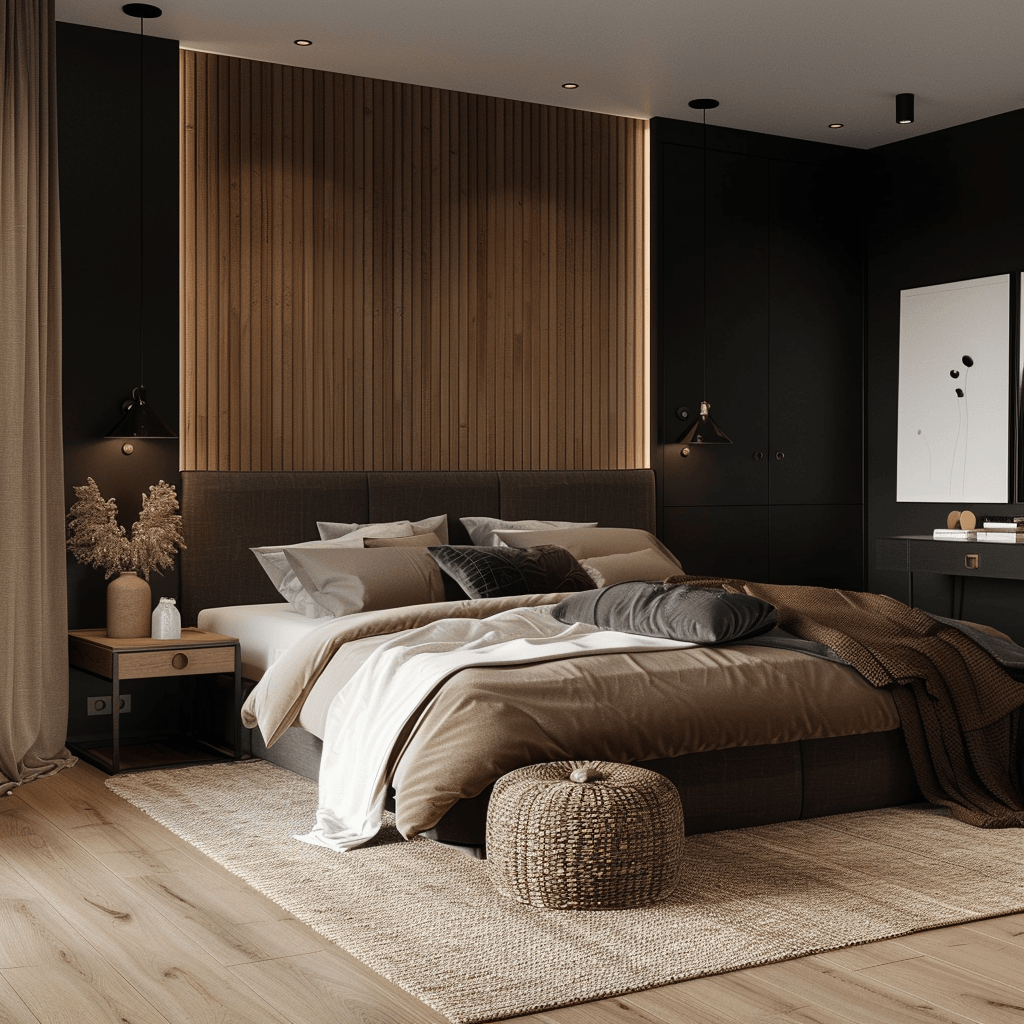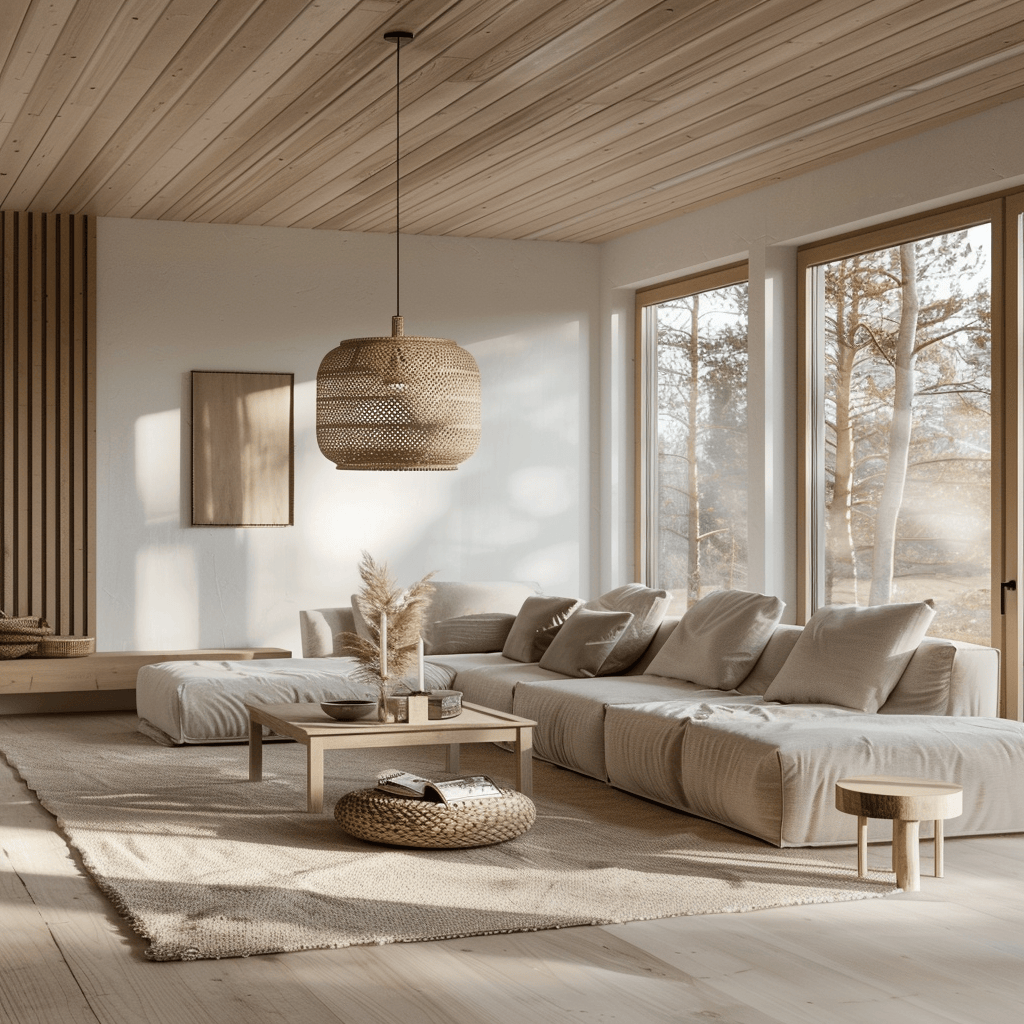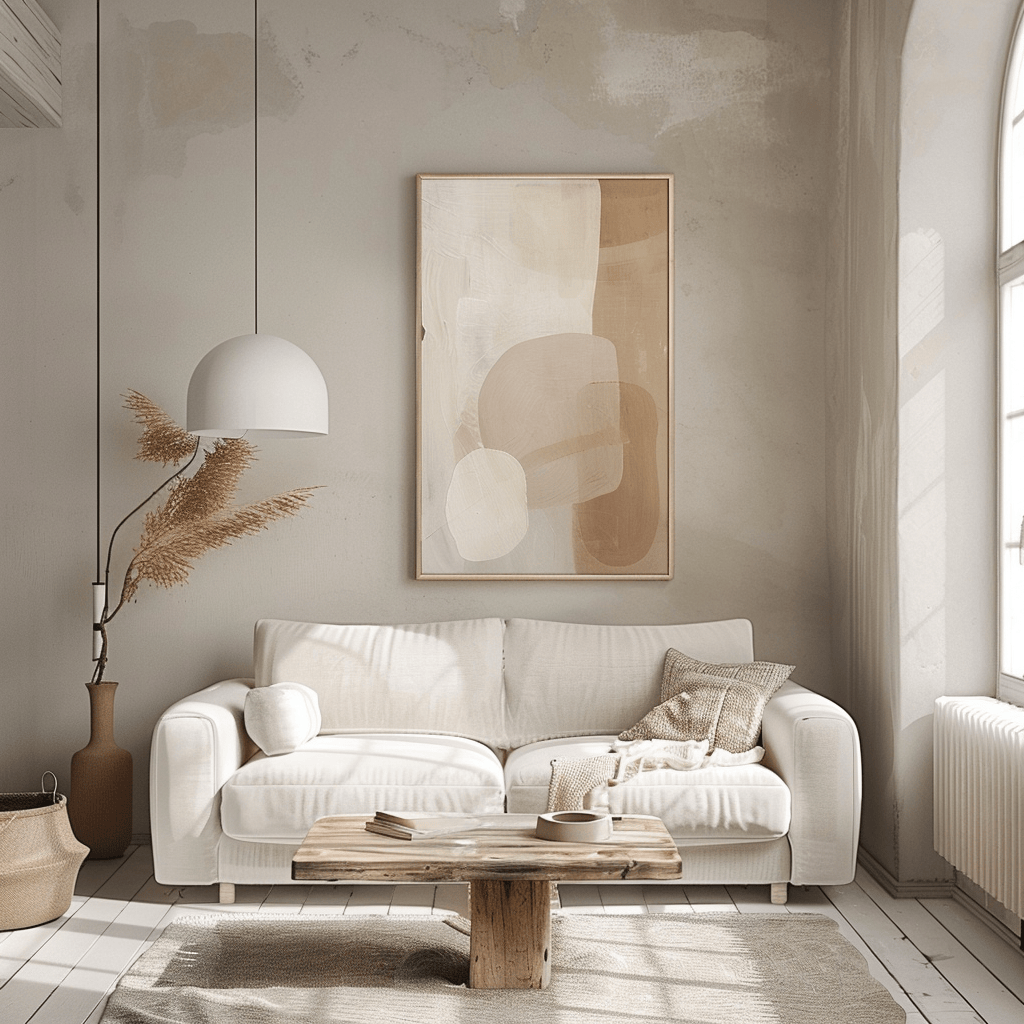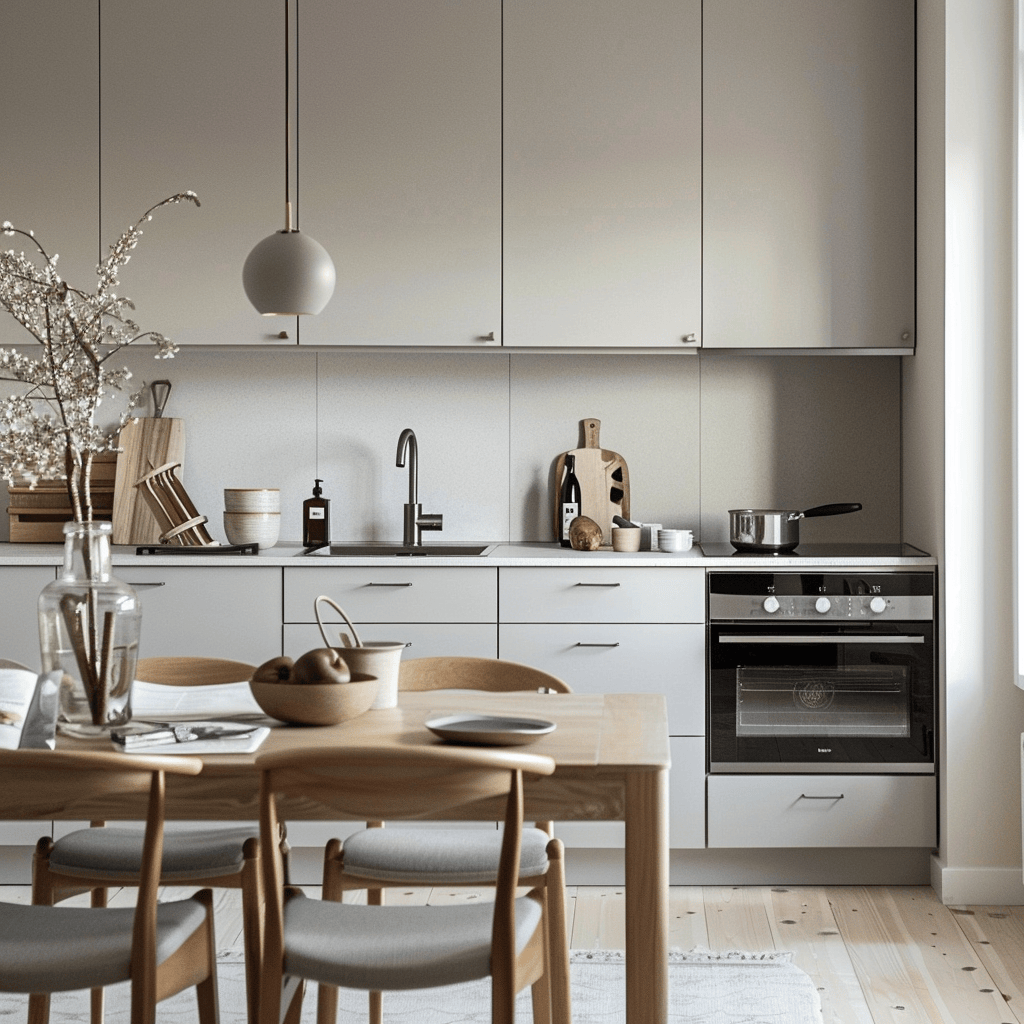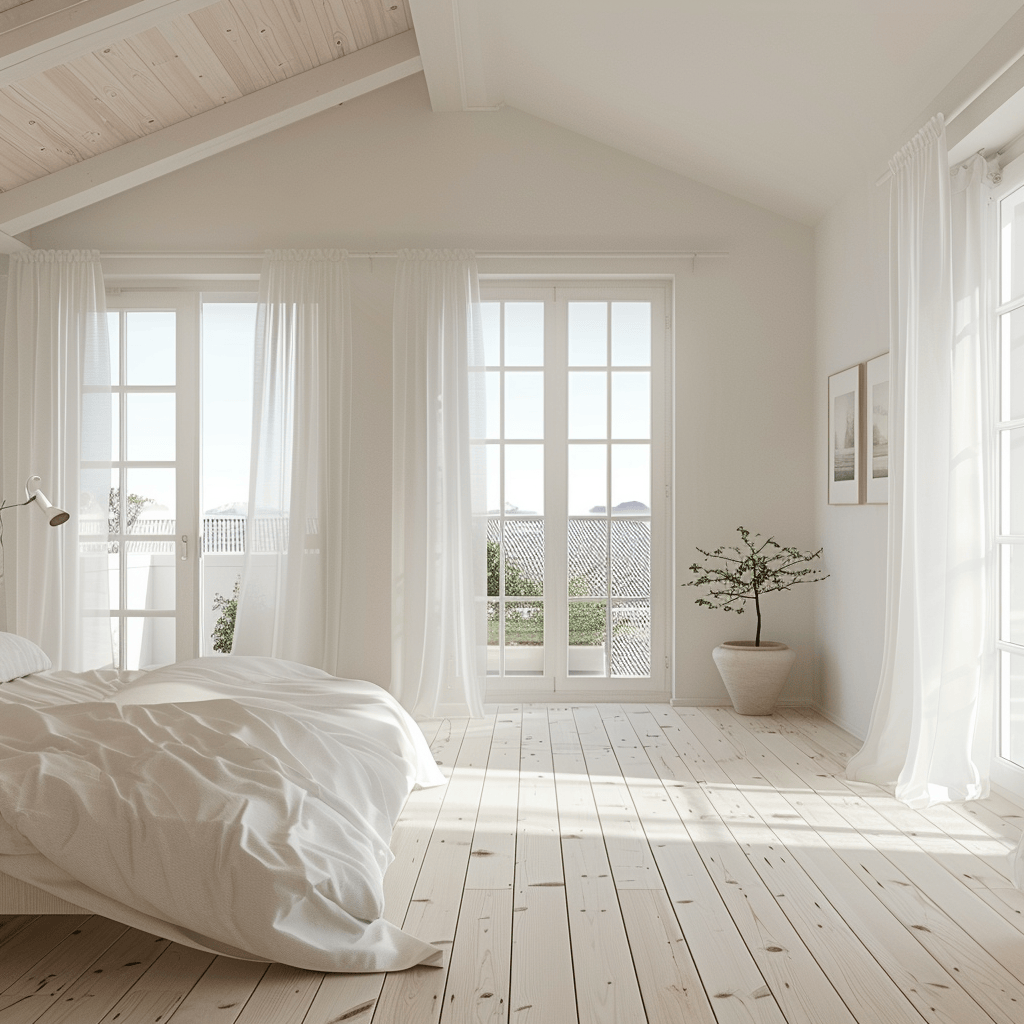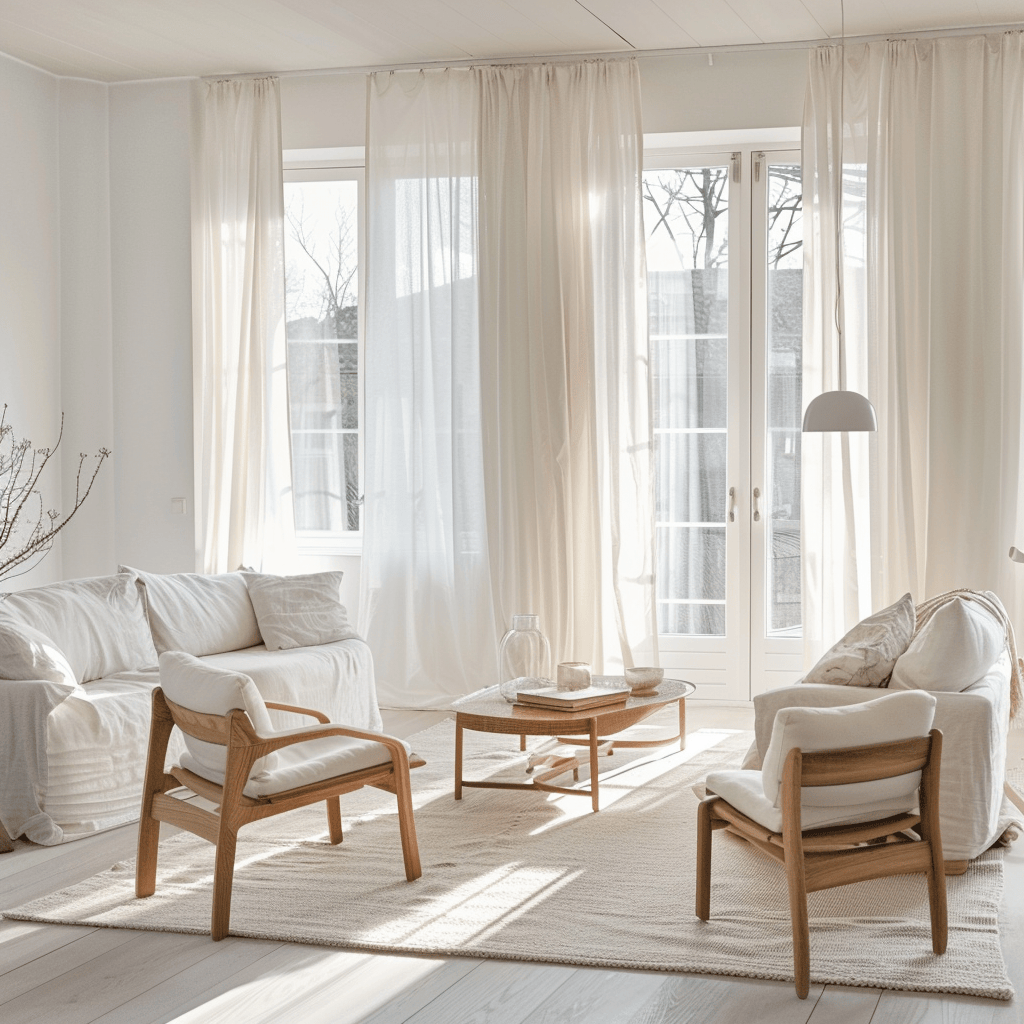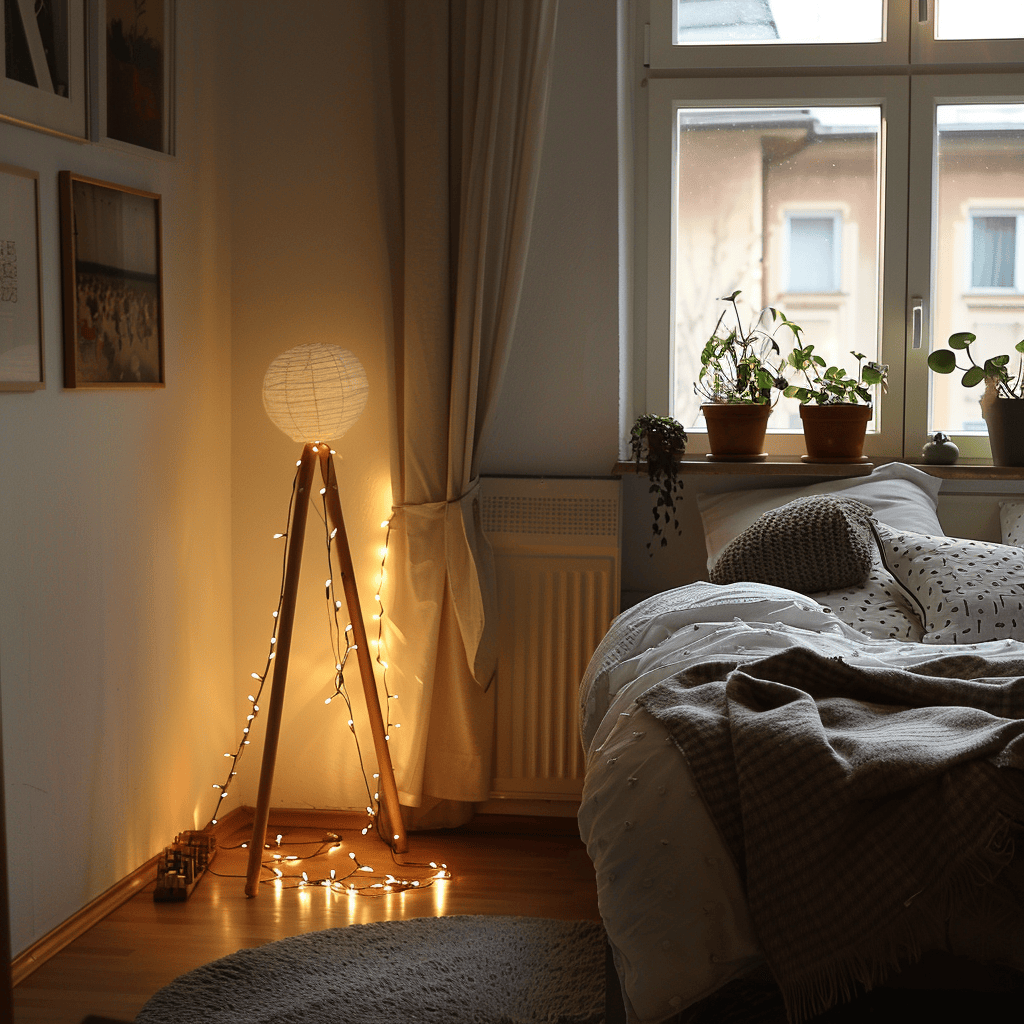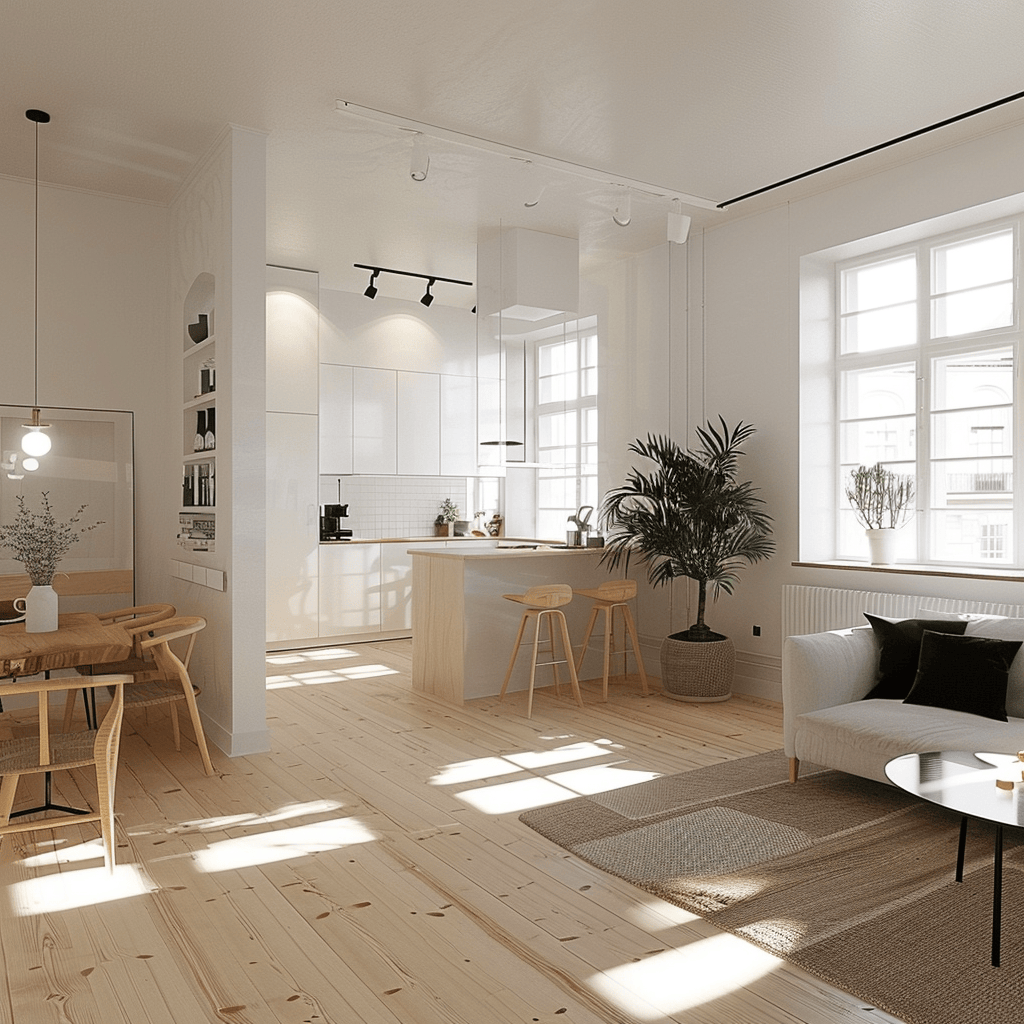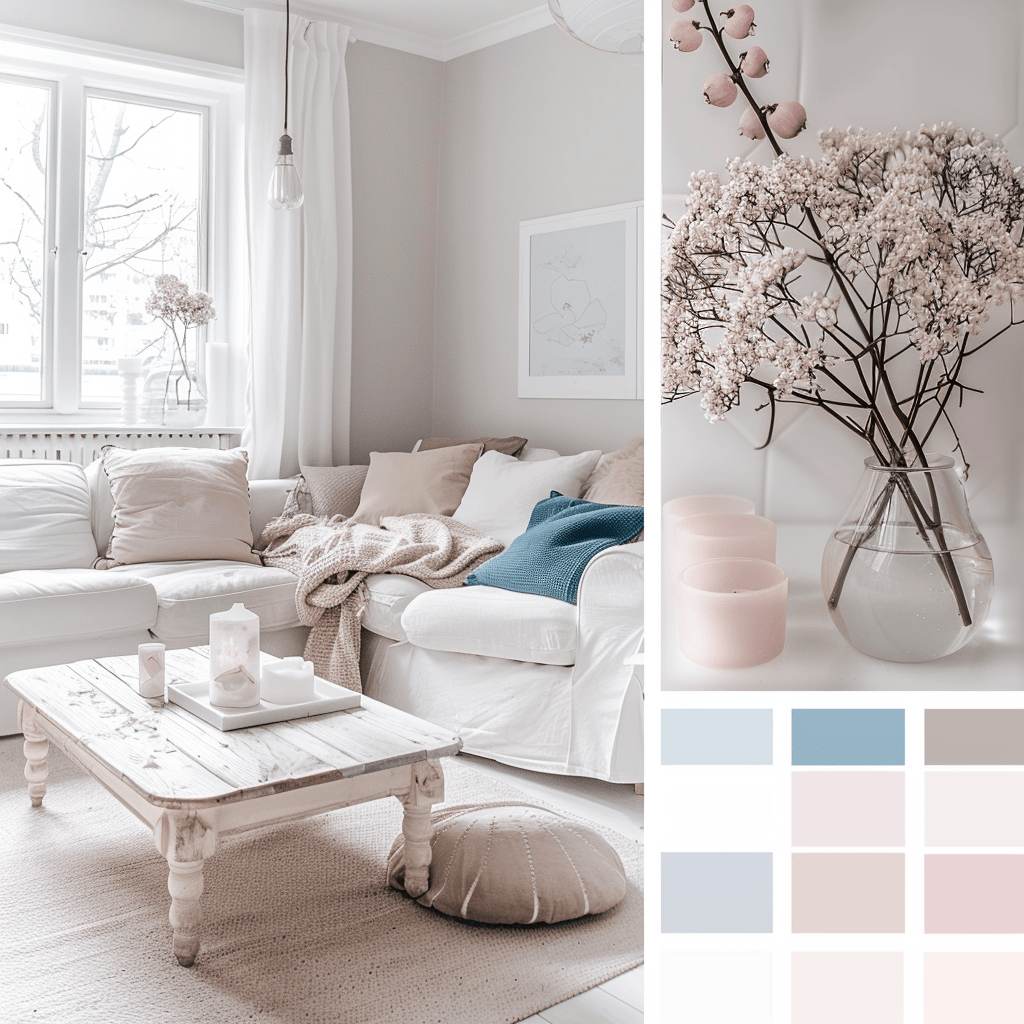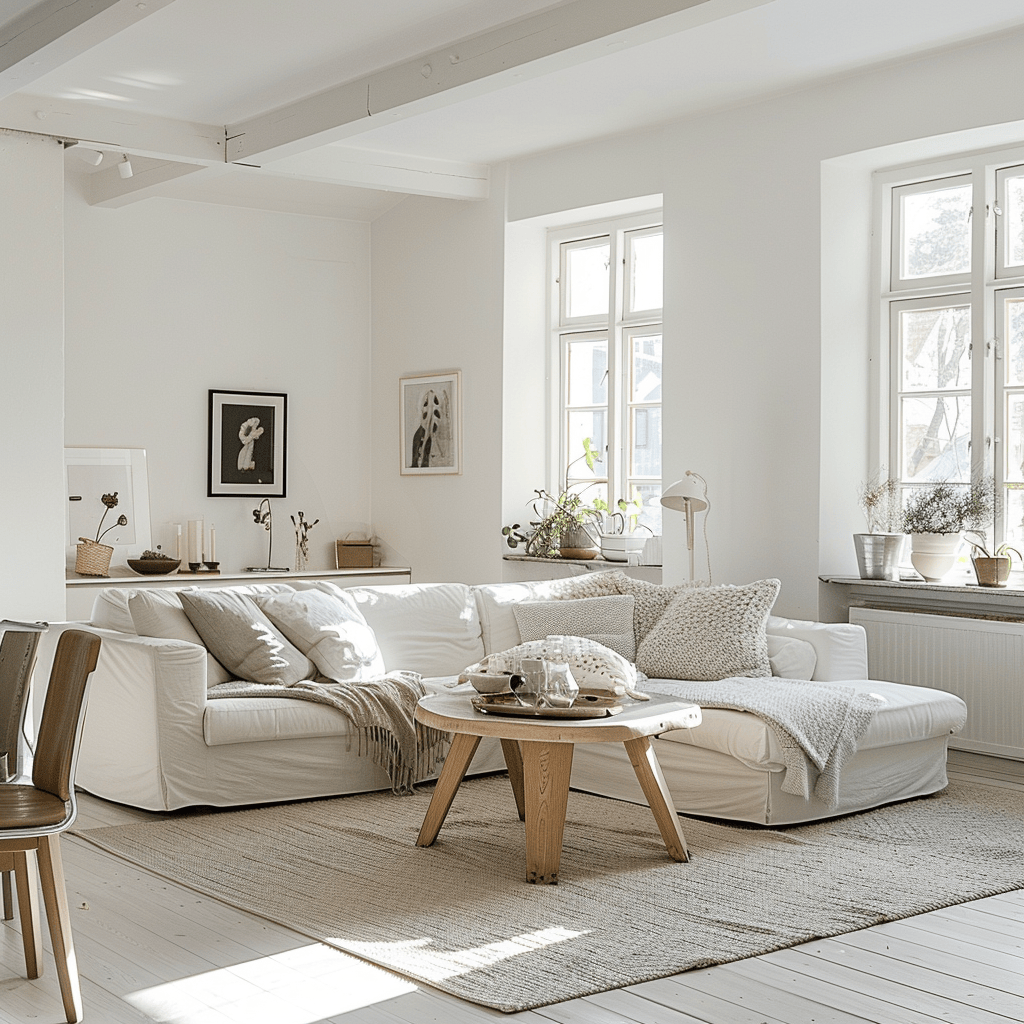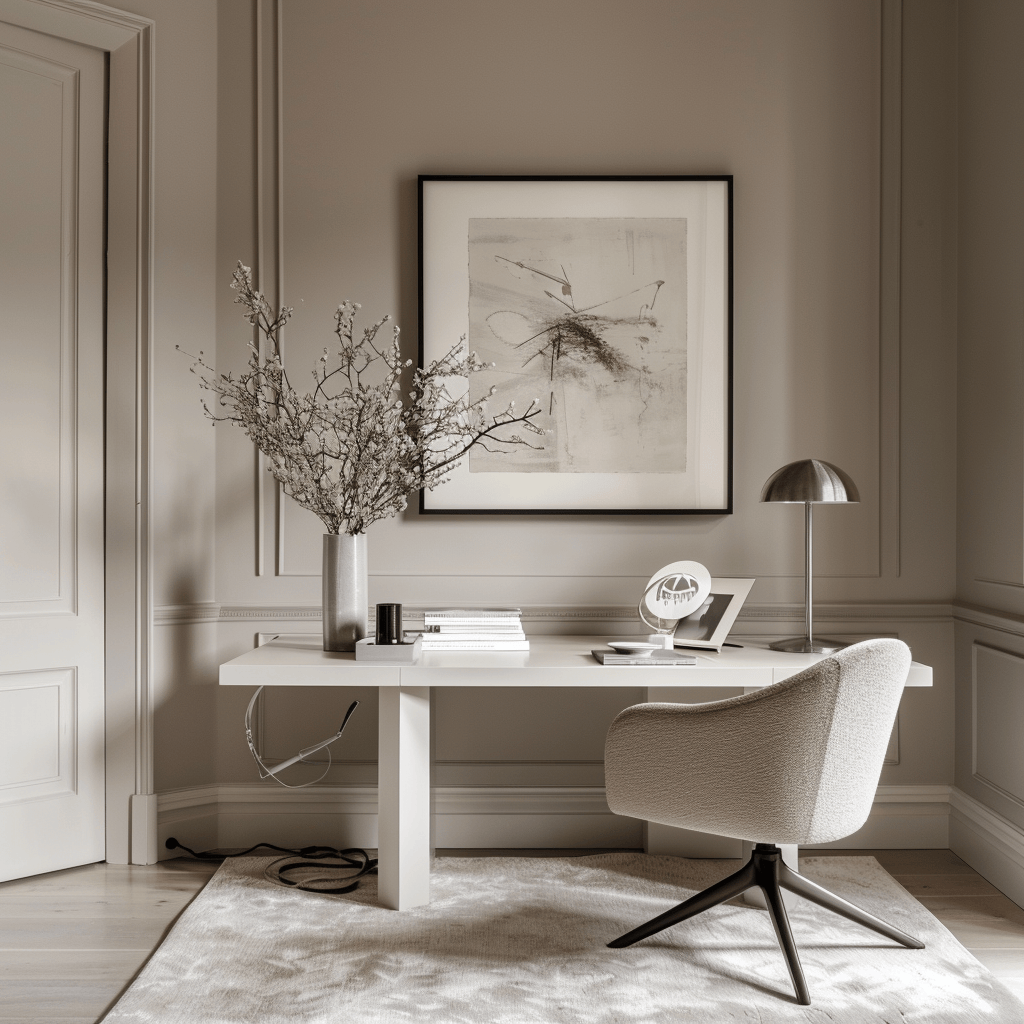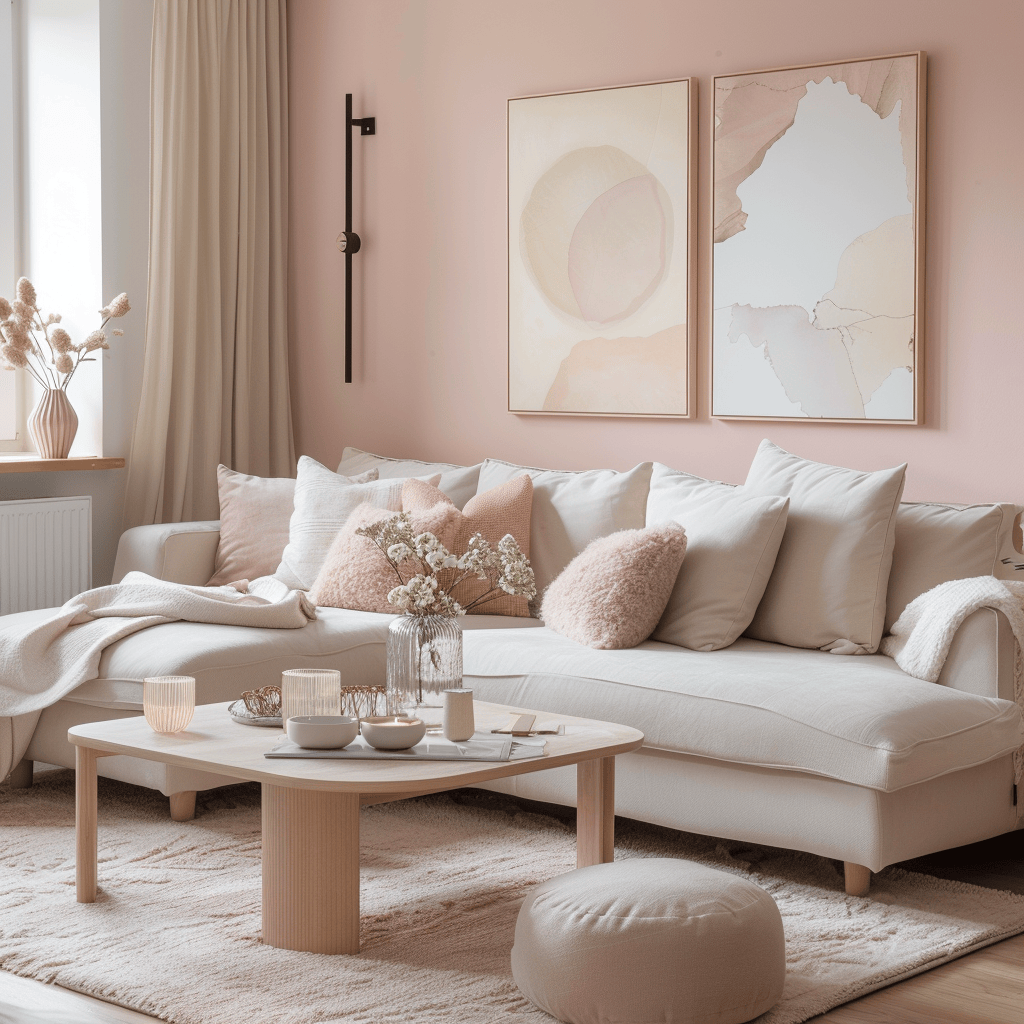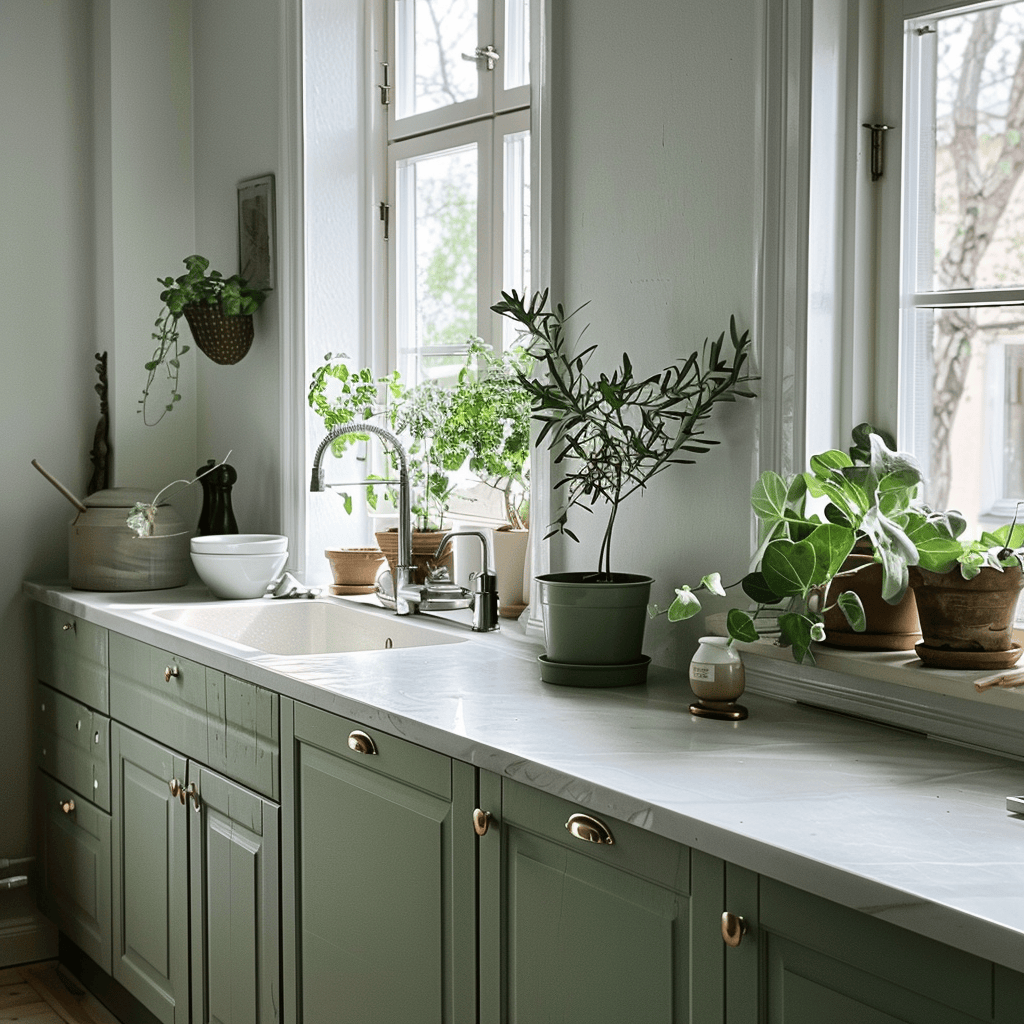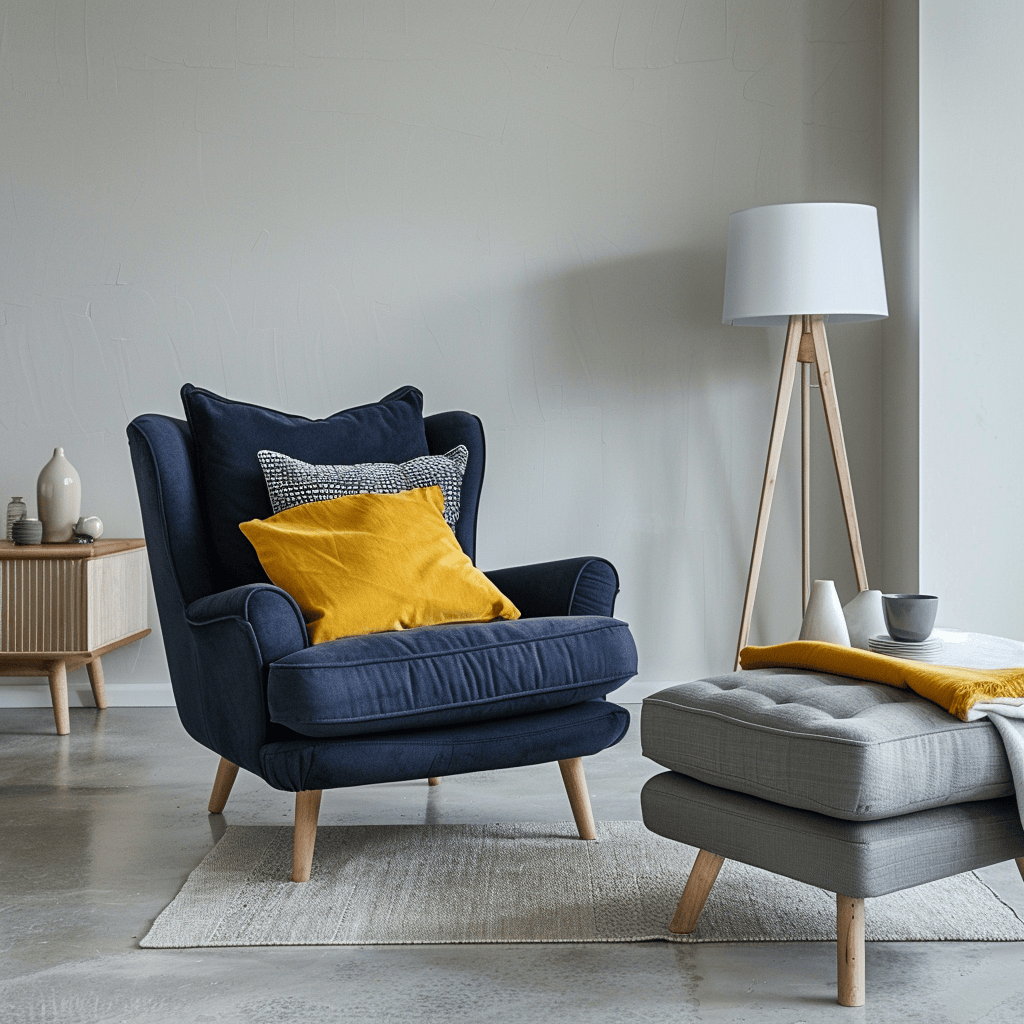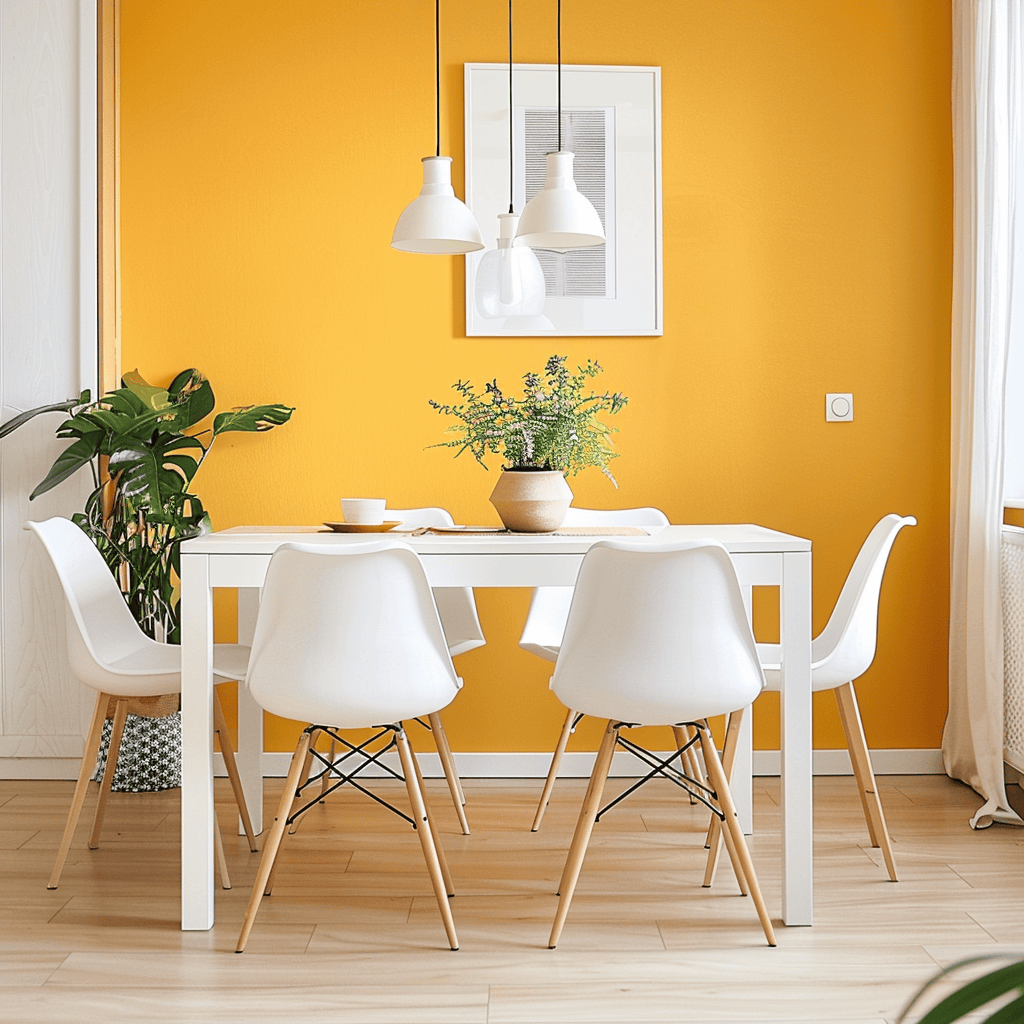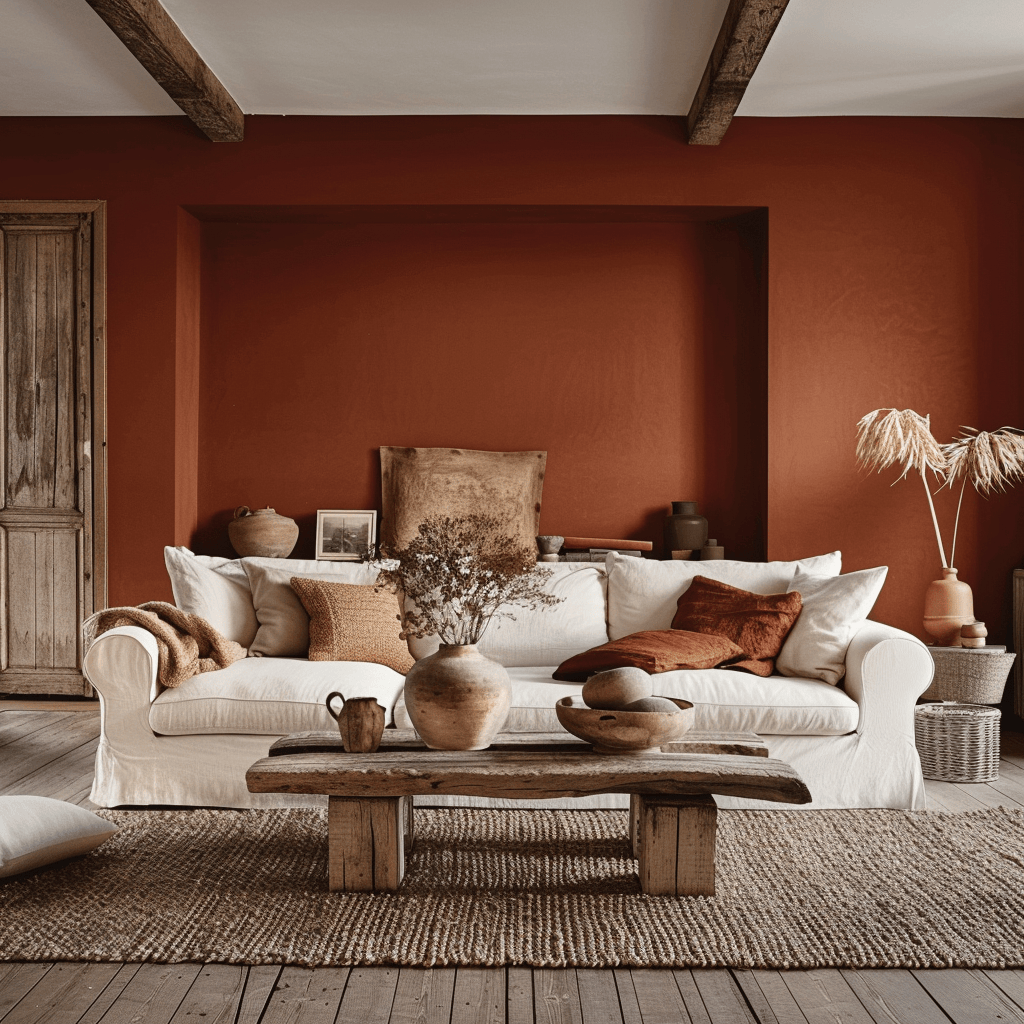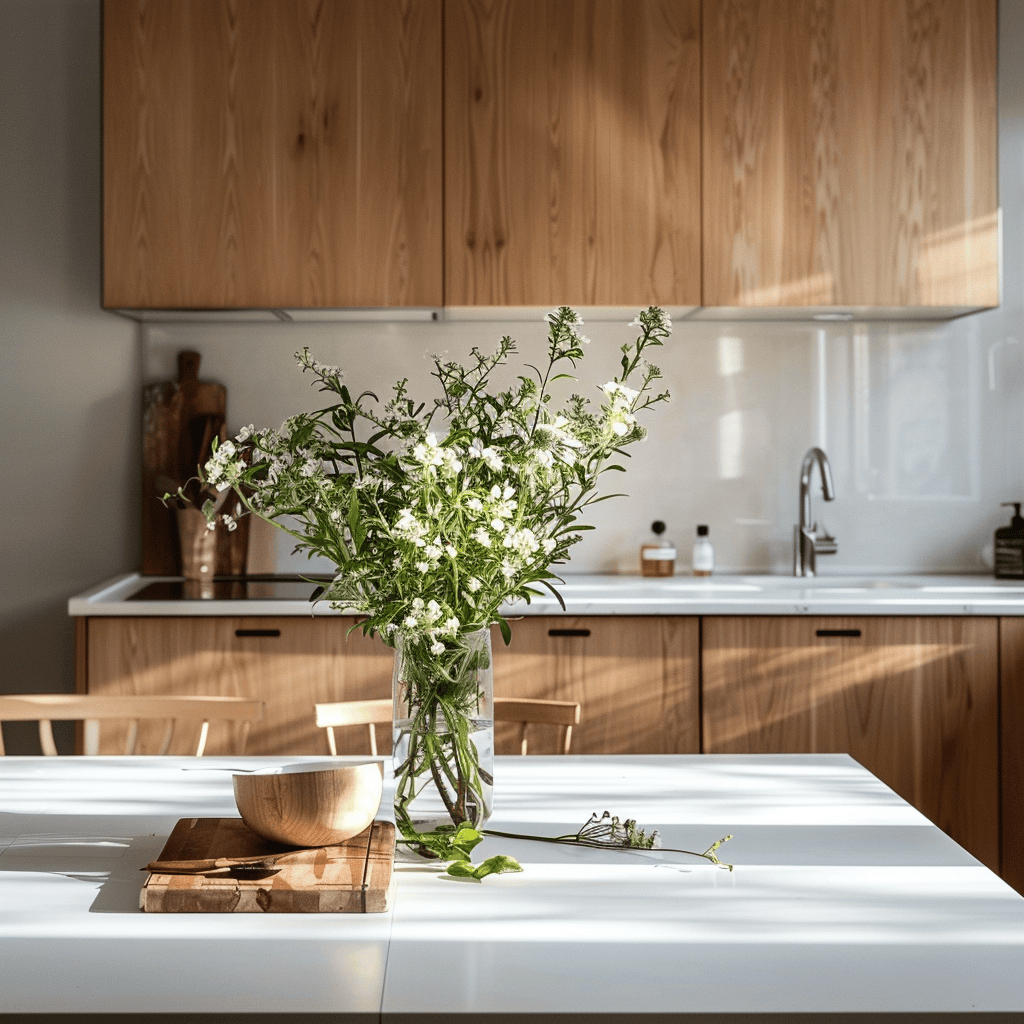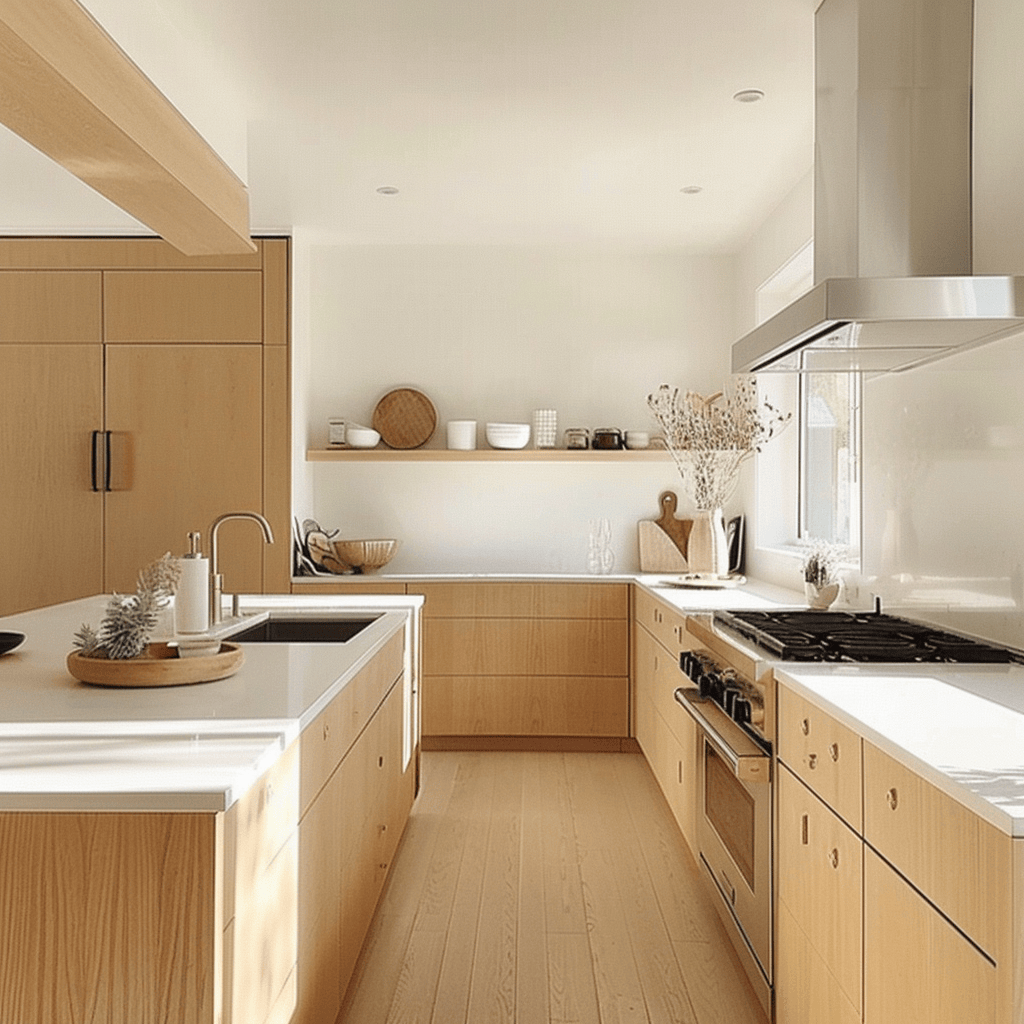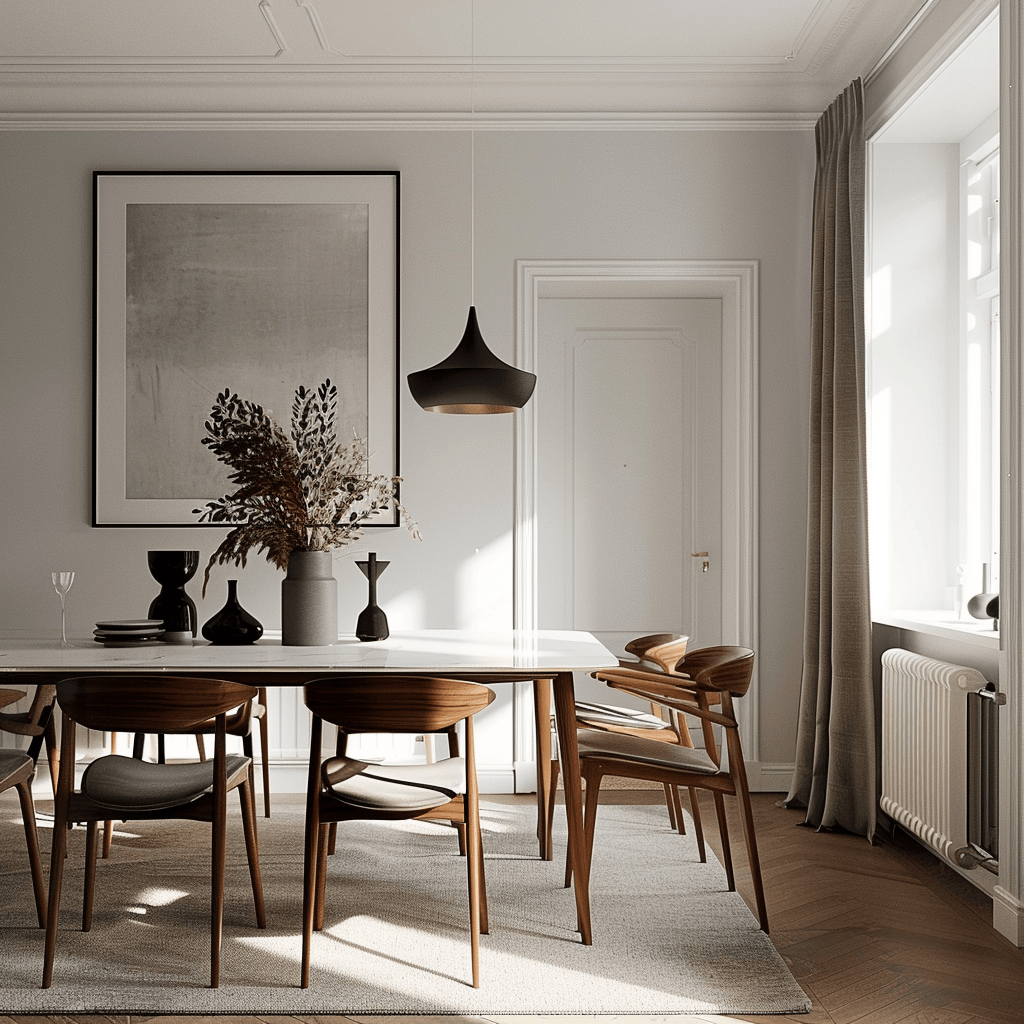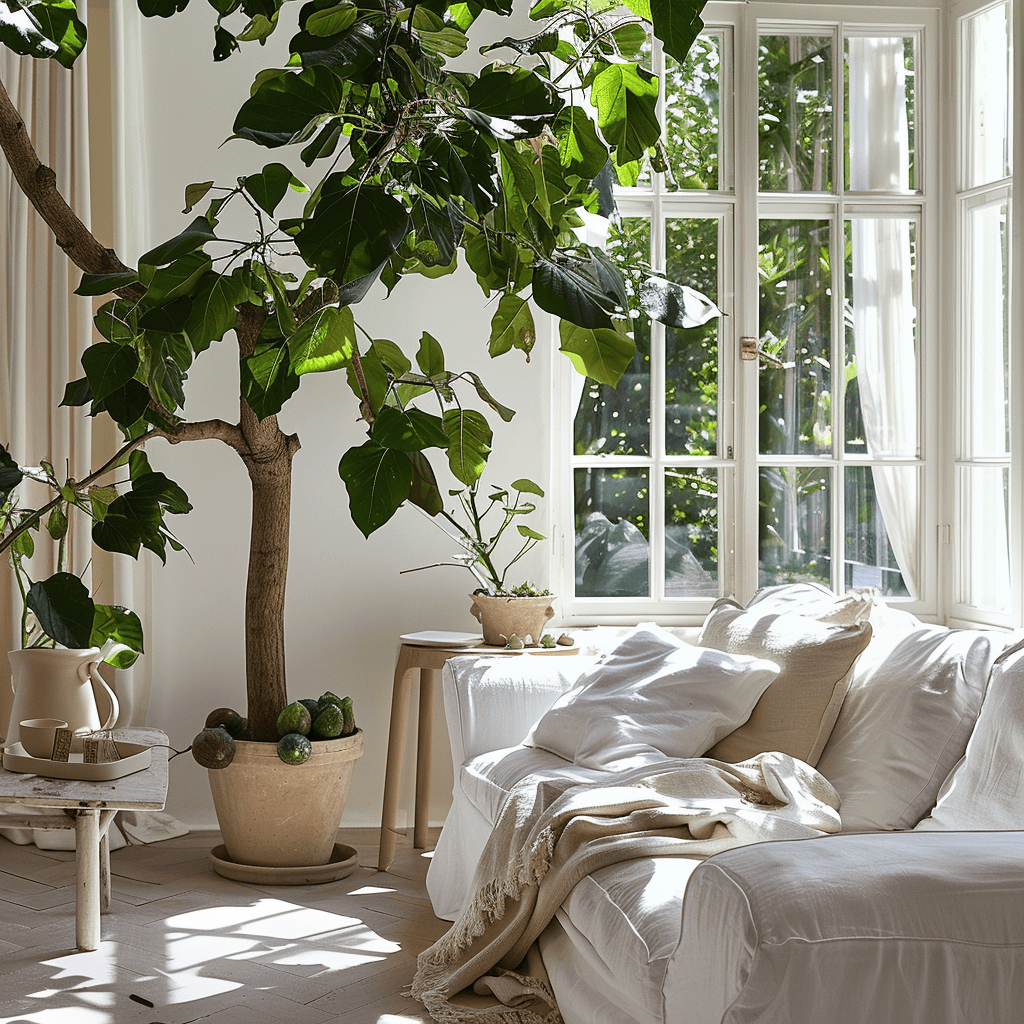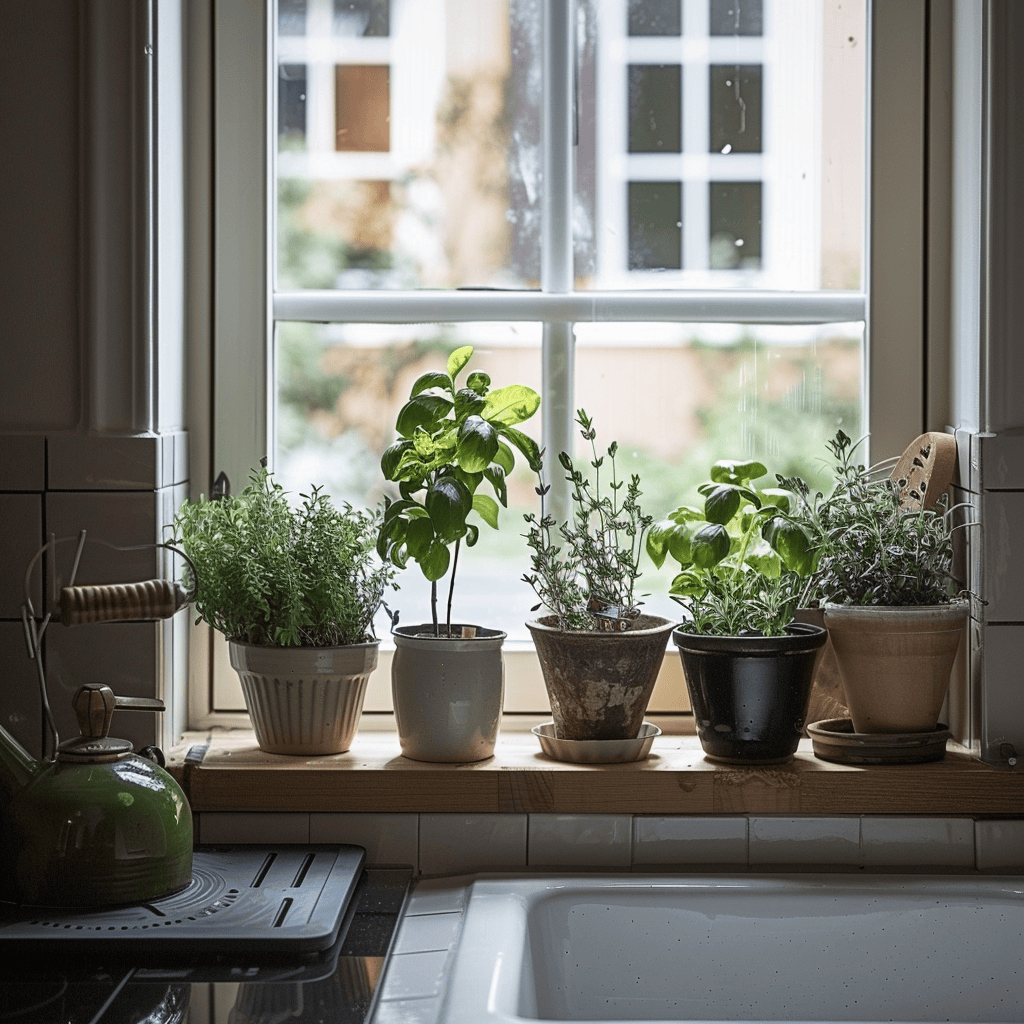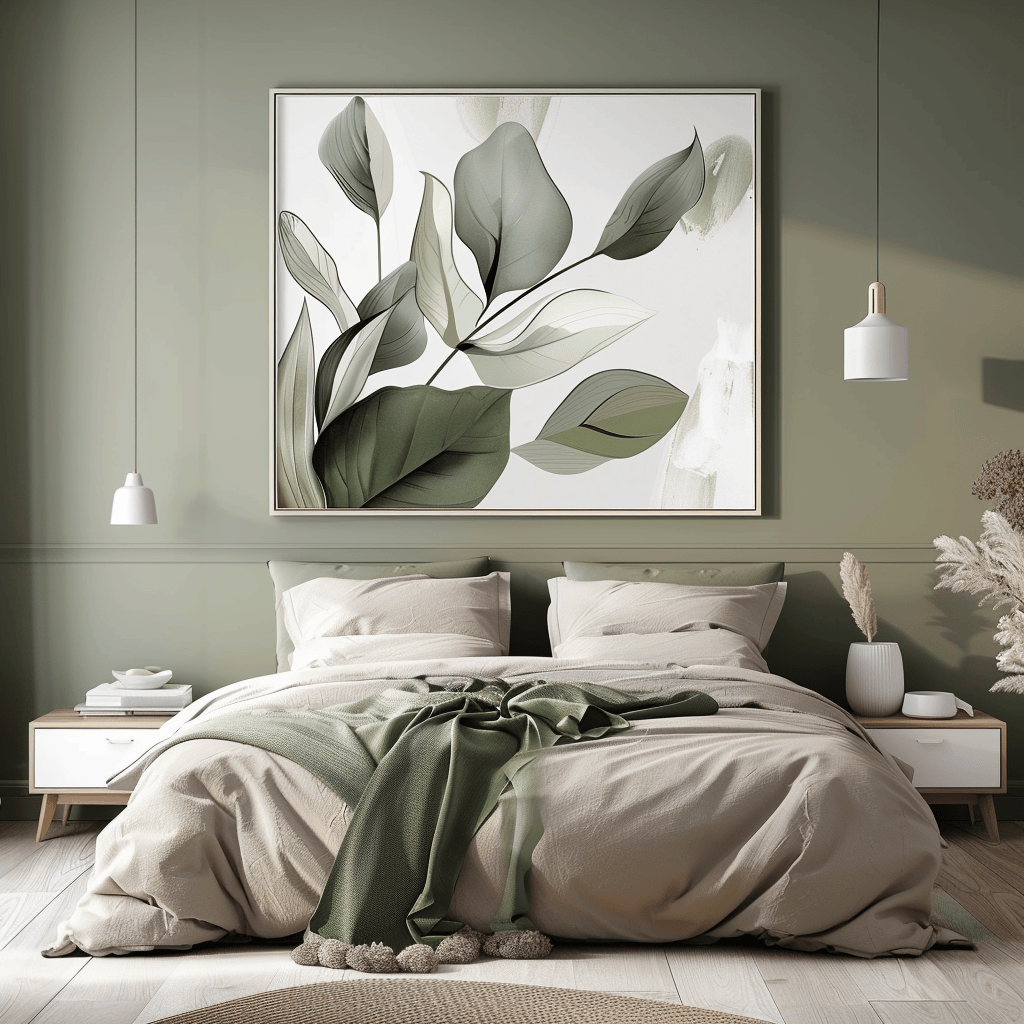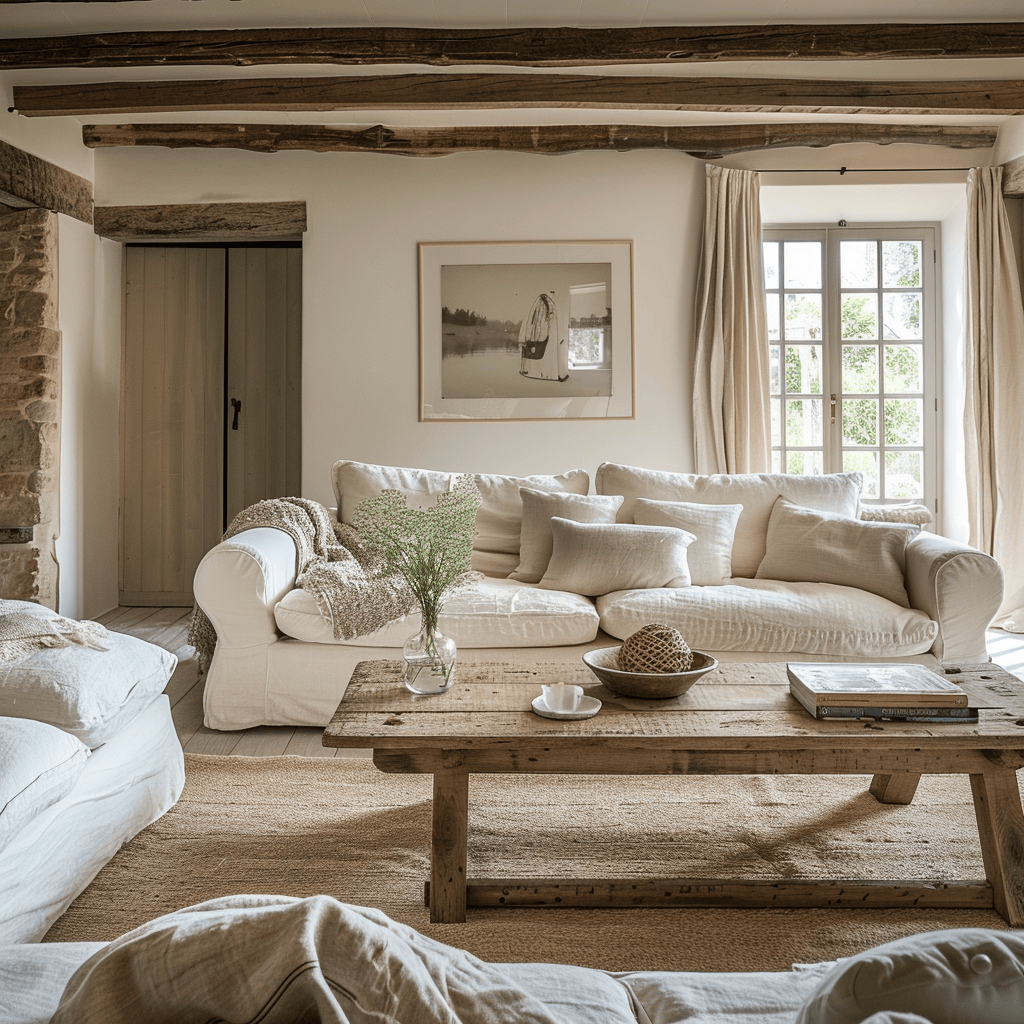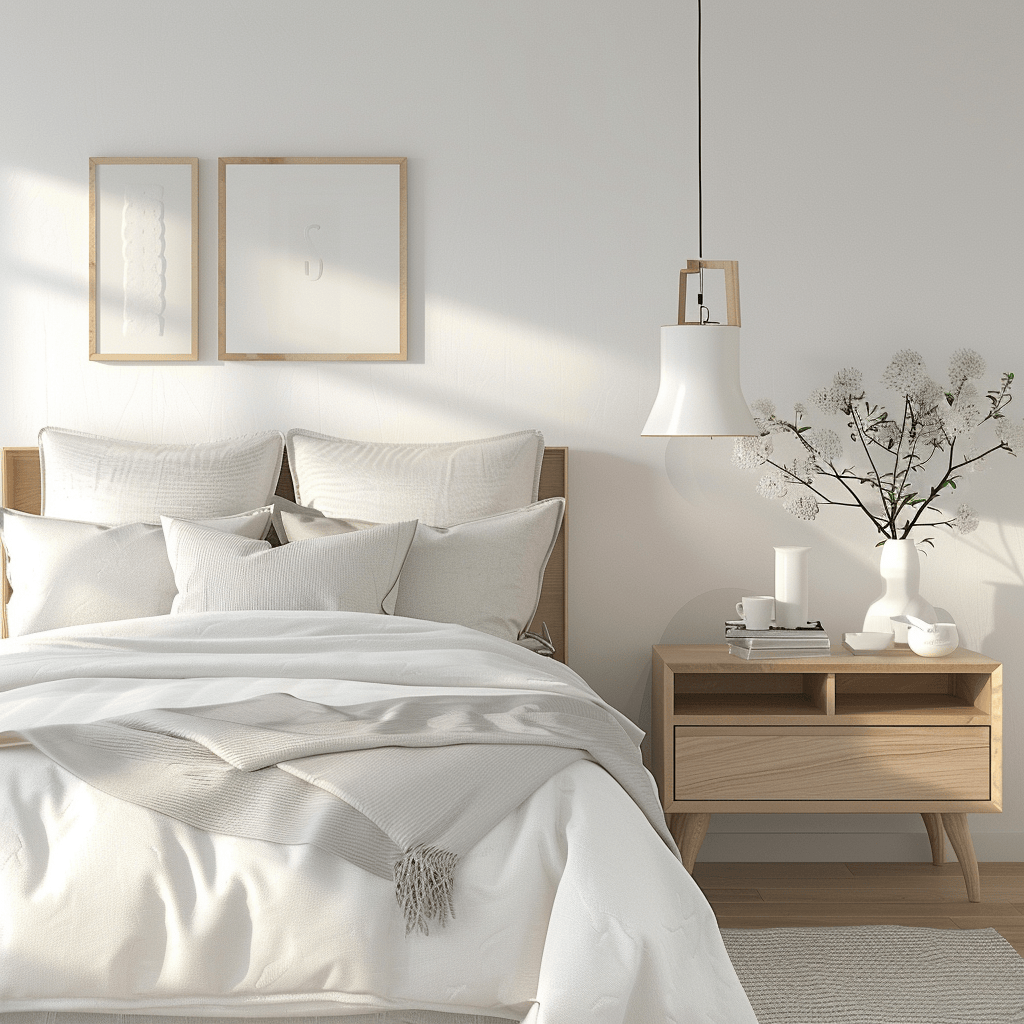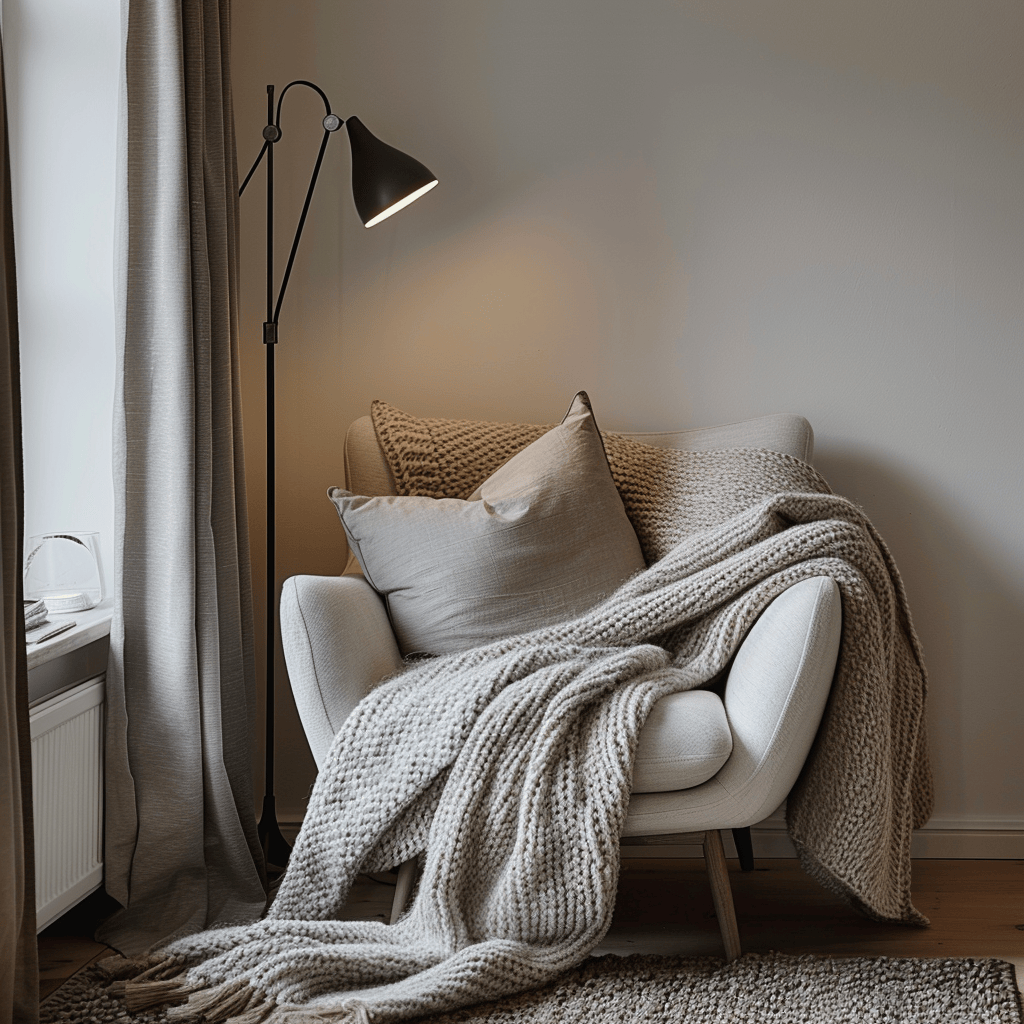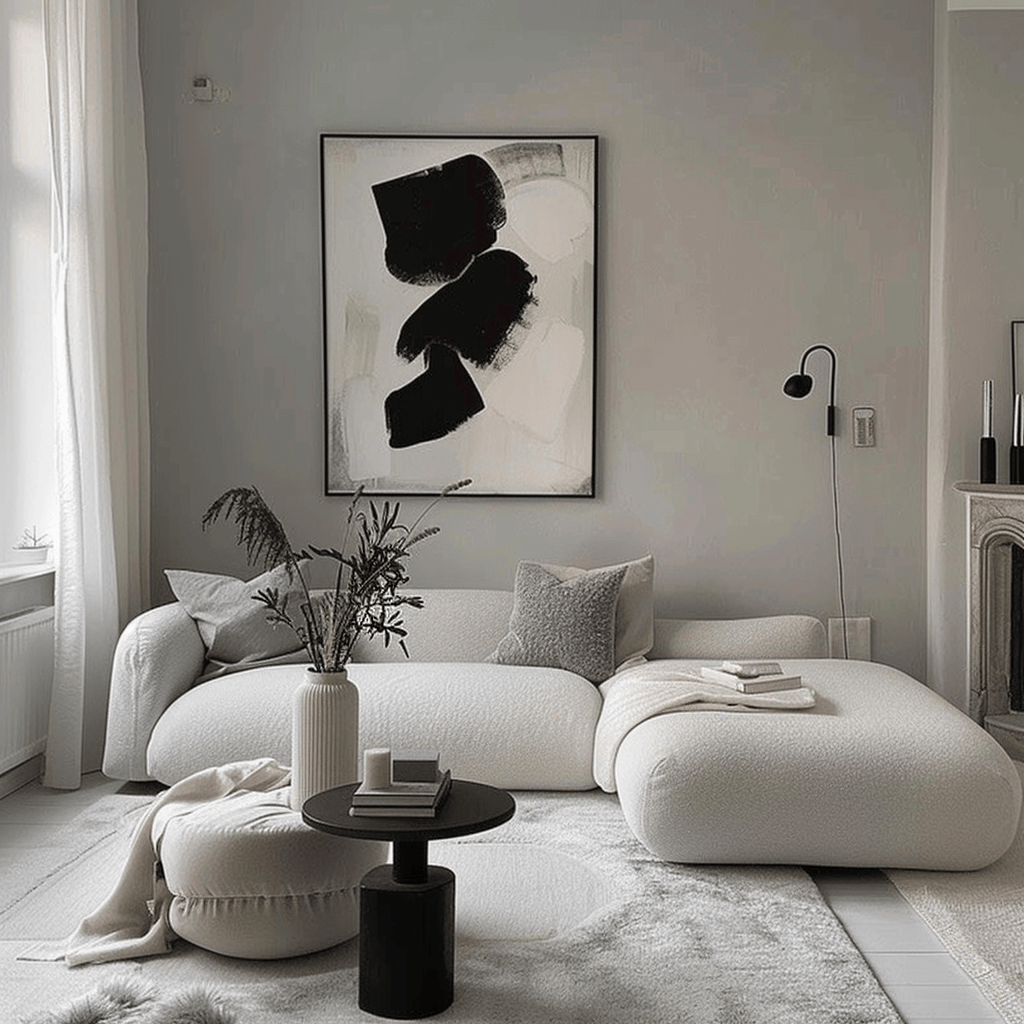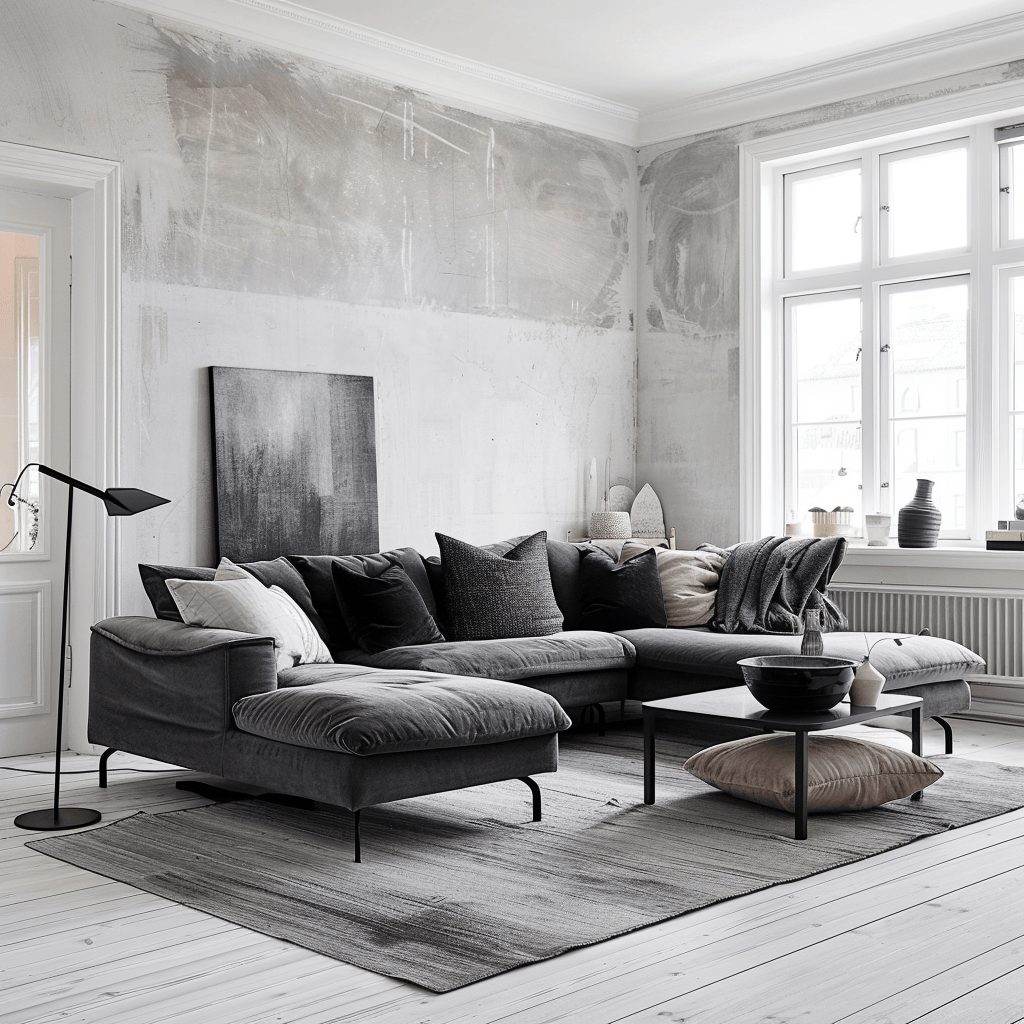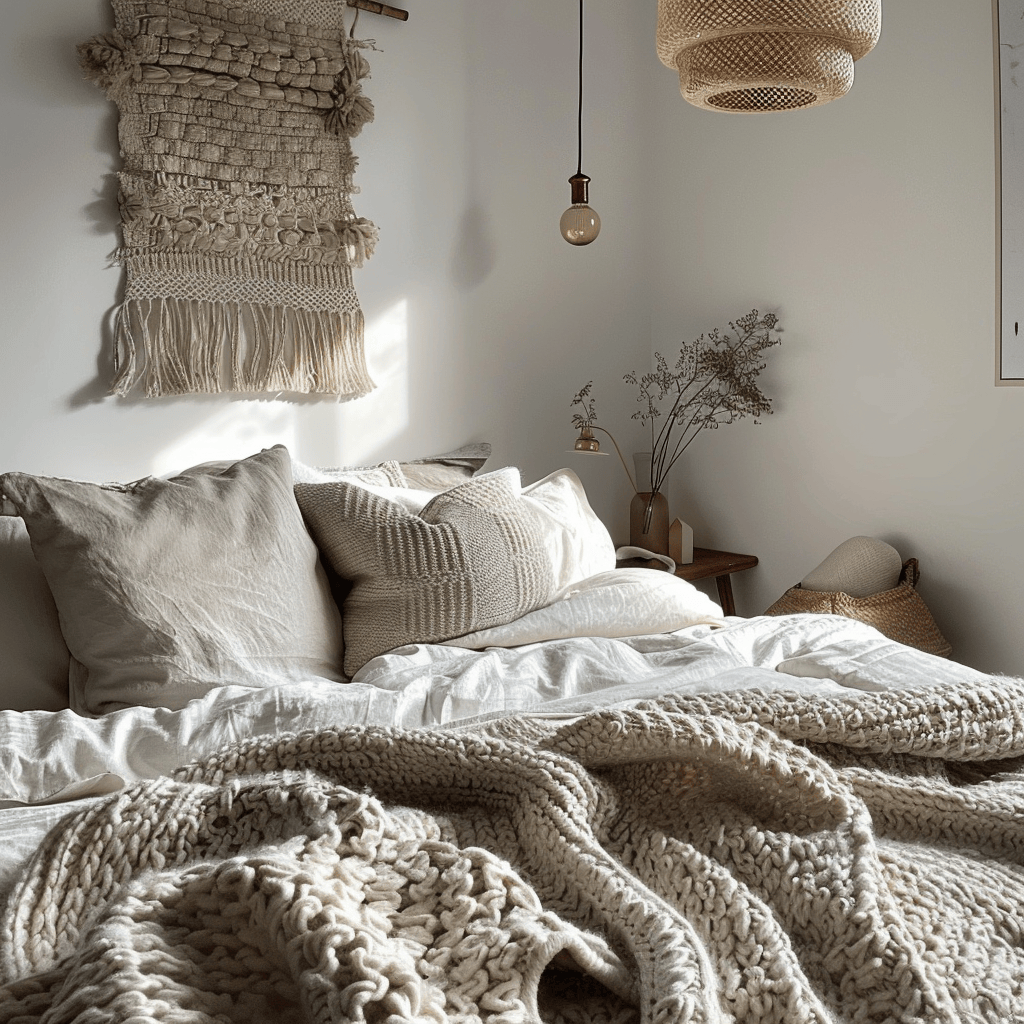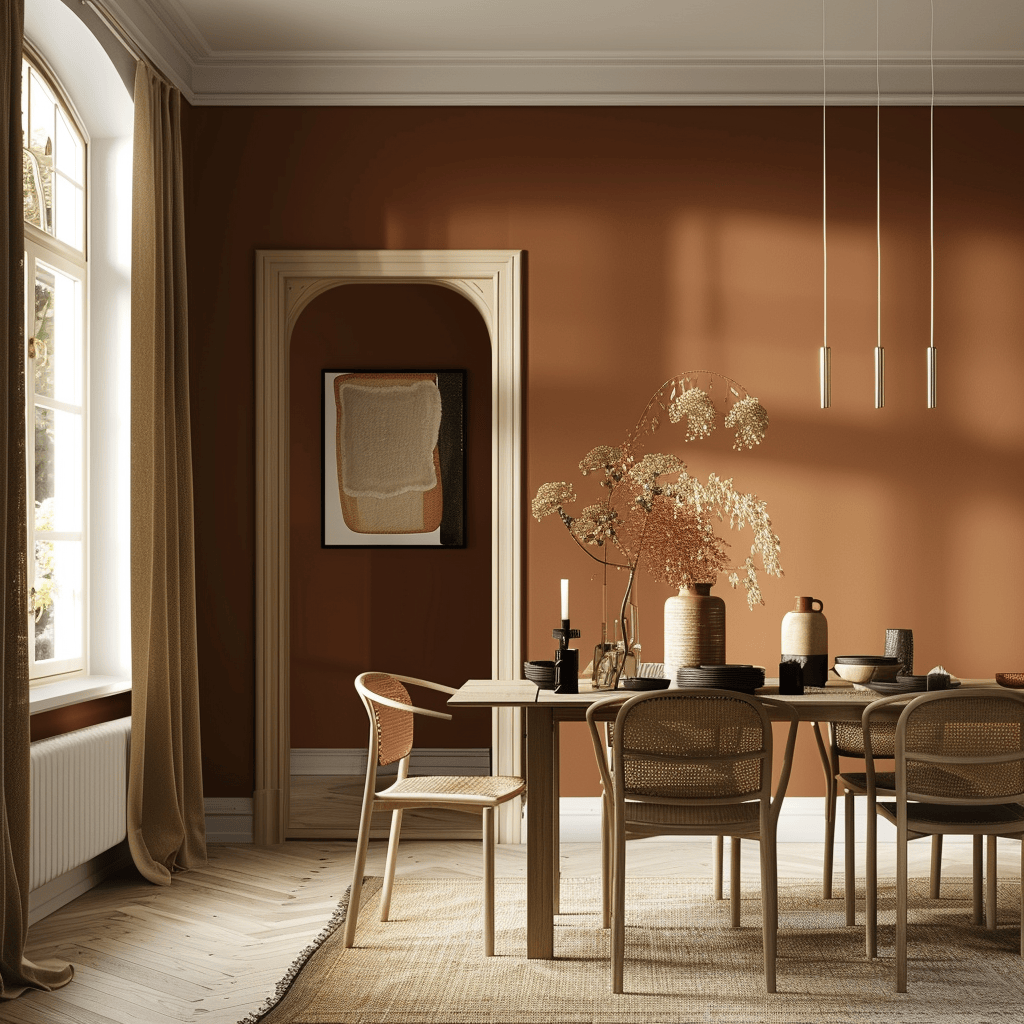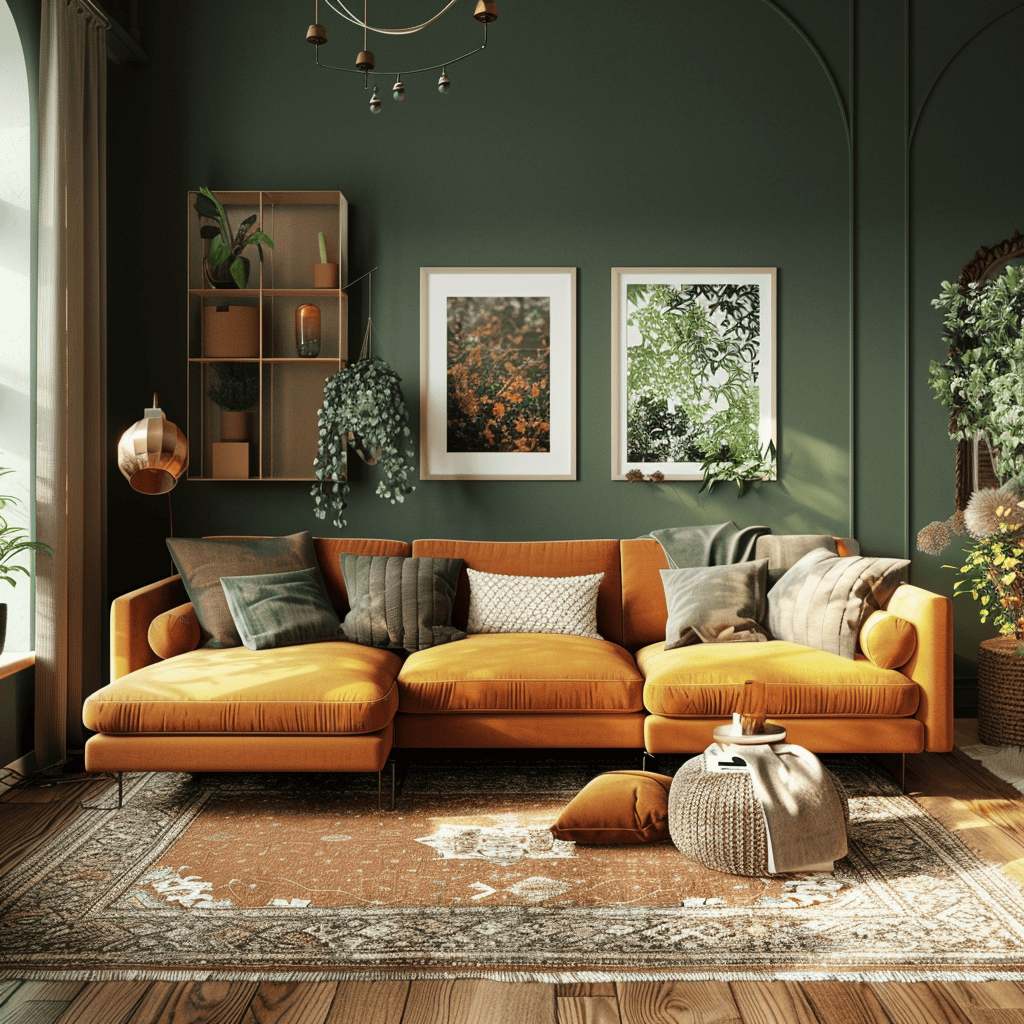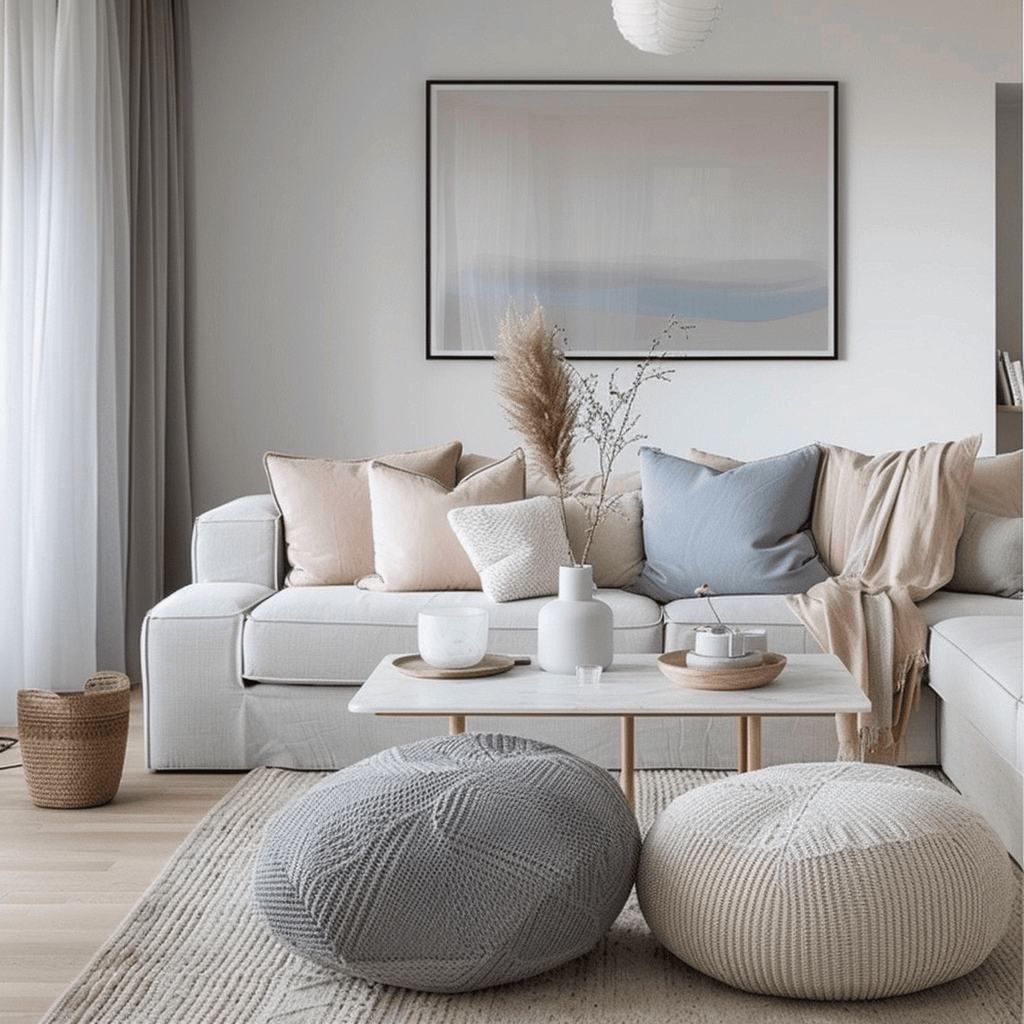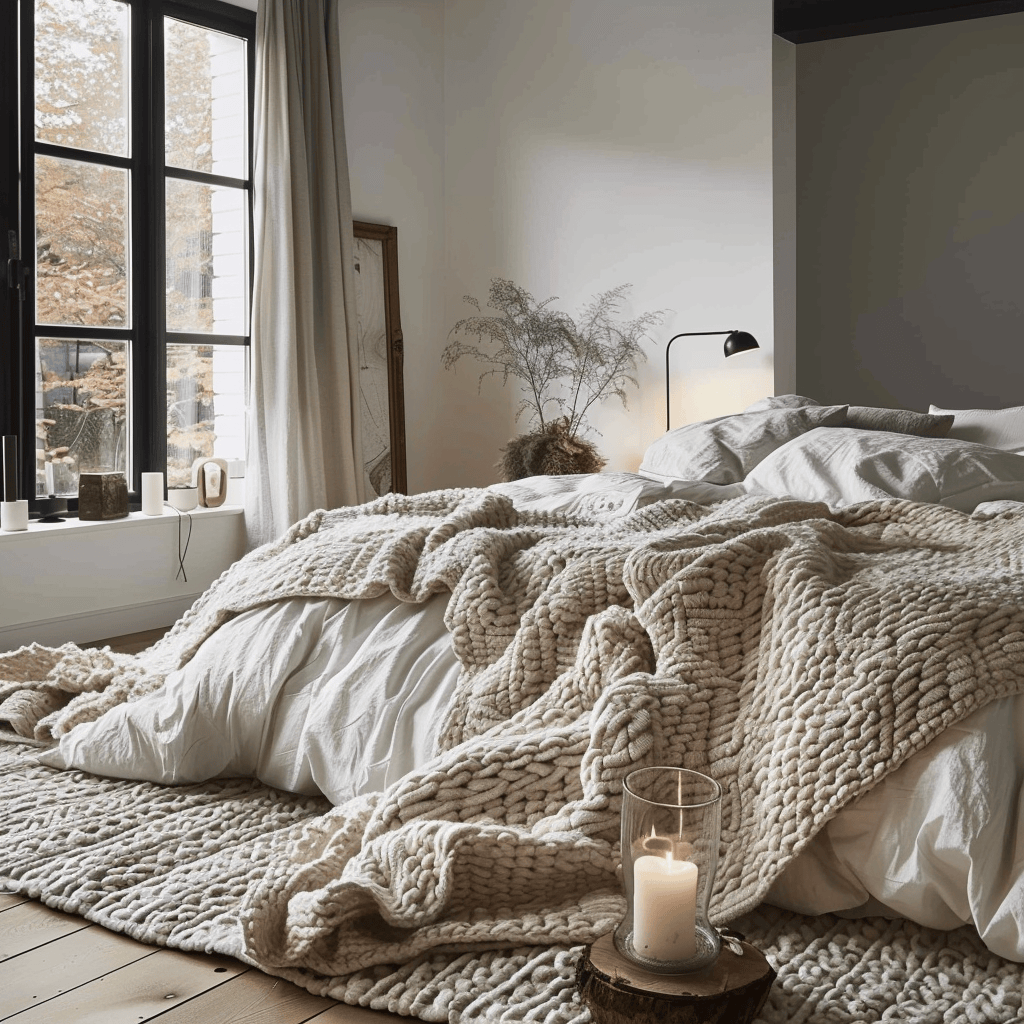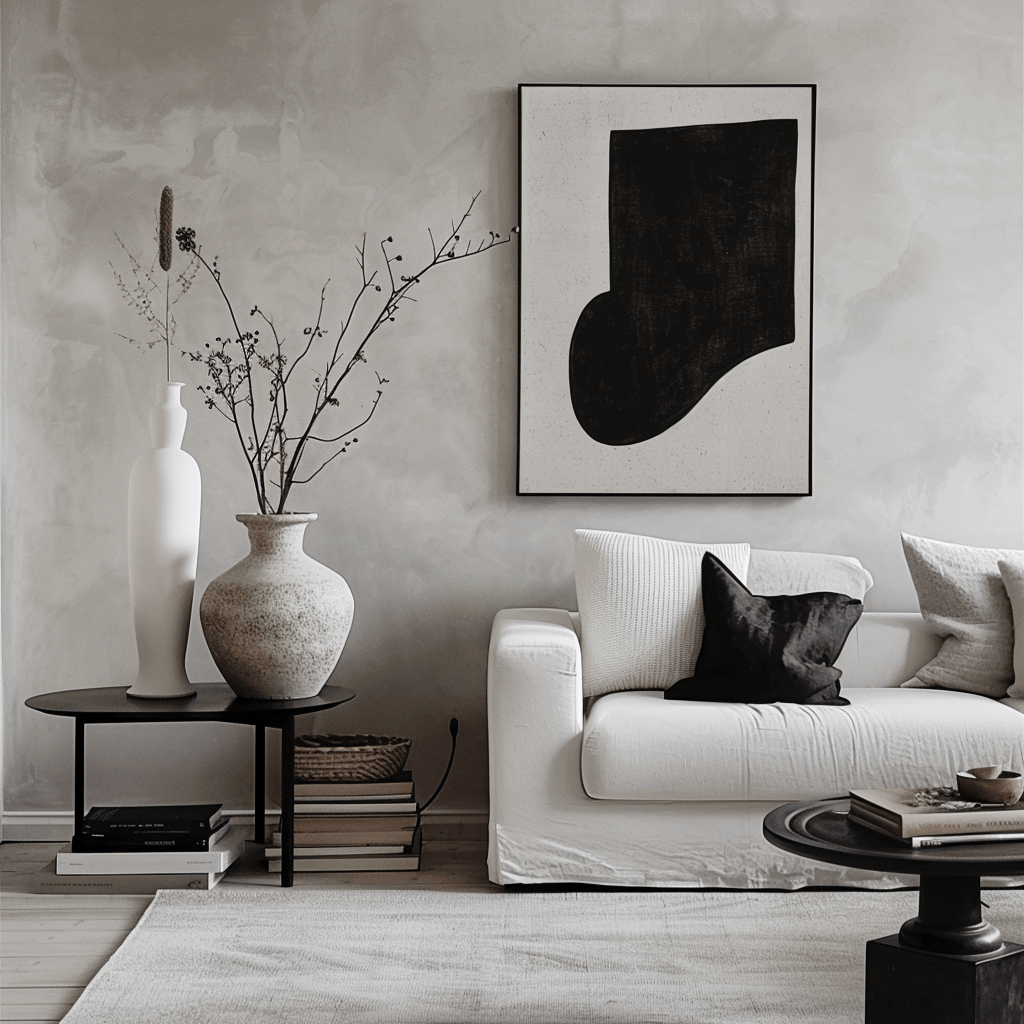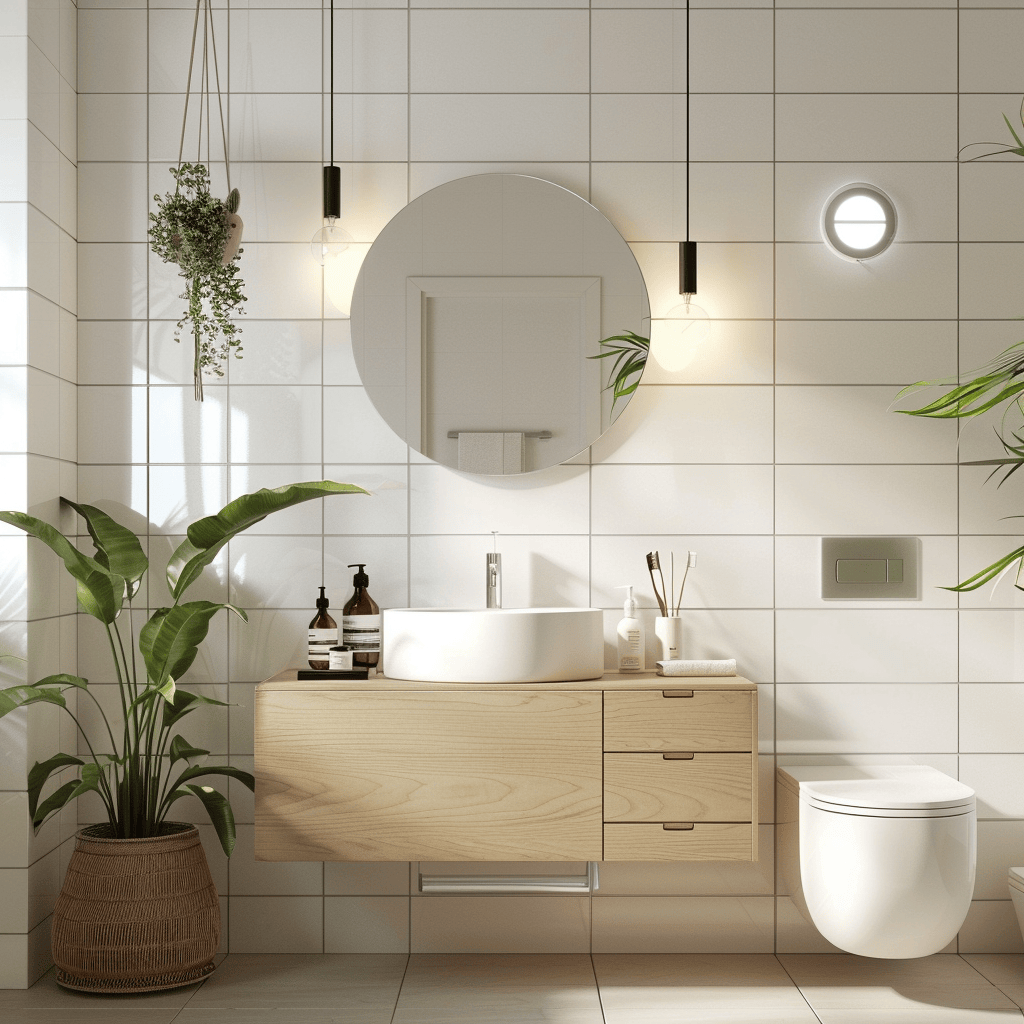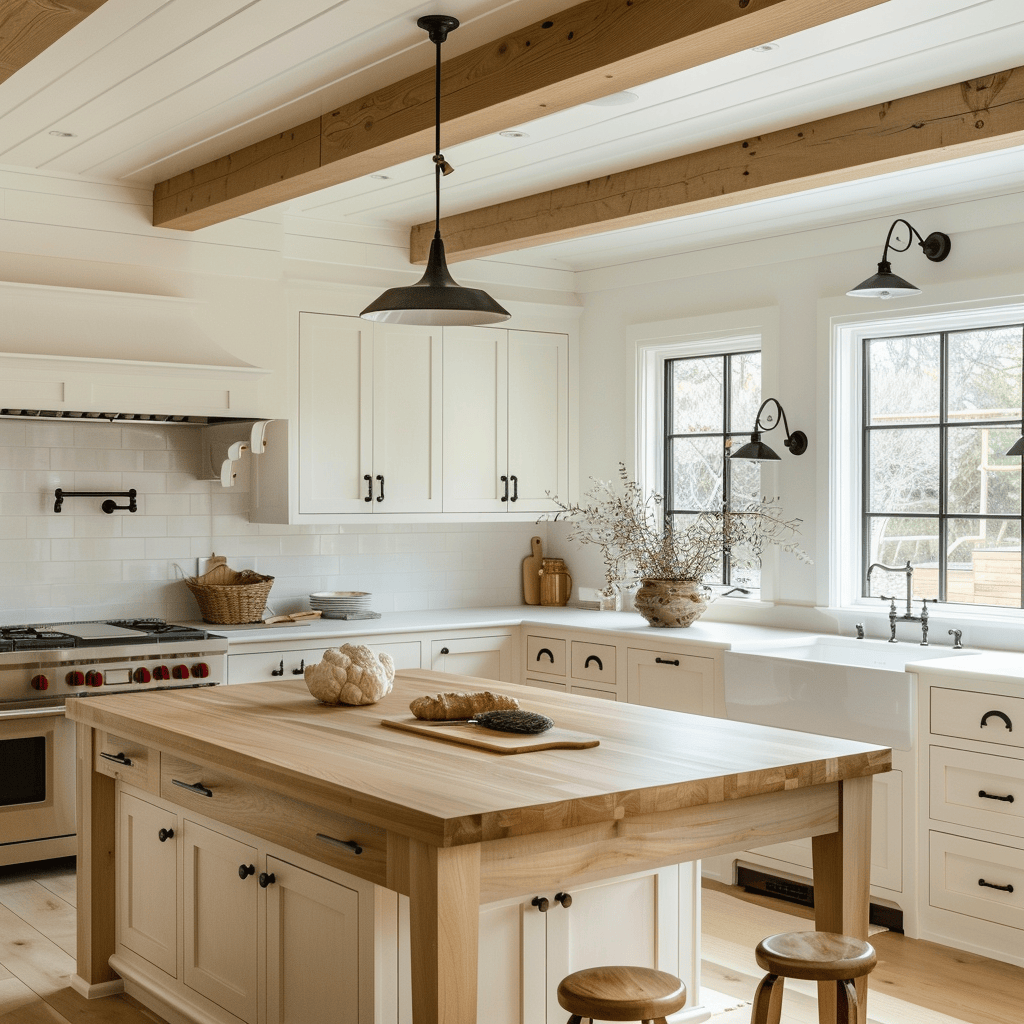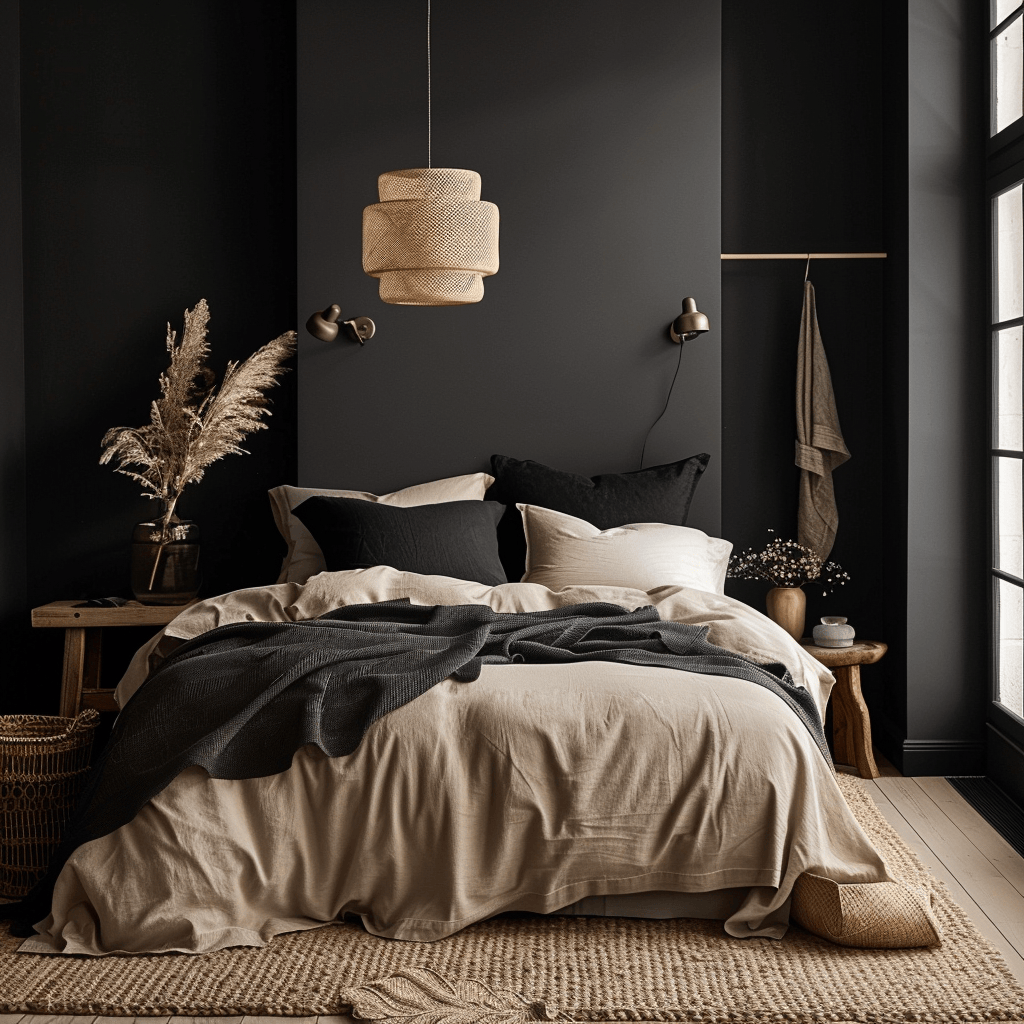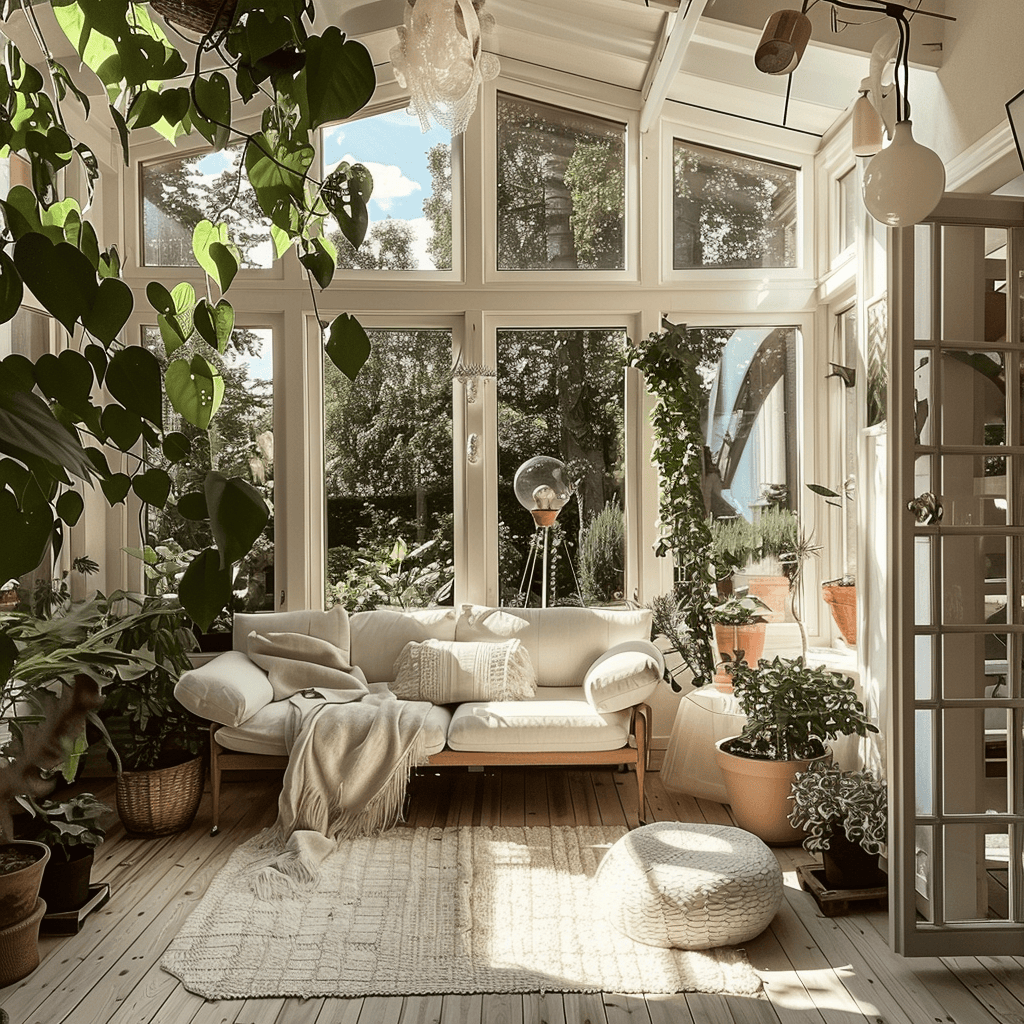The Only Scandinavian Color Guide You Need
By Alan George
Imagine yourself surrounded by the serene, calming hues of a Scandinavian color palette, like you're being wrapped in a cozy, warm hug from your best friend. Picture soft, muted shades of white, gray, pale blue, and pastel pink enveloping you in a sense of tranquility and peace, inviting you to relax and unwind in your own personal haven. Whether you're curled up with a good book, enjoying a cup of tea, or simply basking in the beauty of your surroundings, Scandinavian colors have a way of making you feel right at home, like you're spending time with a cherished companion who always knows just how to put you at ease.
1/60
Understanding the Scandinavian Design Philosophy
Scandinavian design is rooted in the principles of simplicity, functionality, and a deep connection to nature. These core values are reflected in the color palettes chosen for Scandinavian interiors, which often feature a harmonious blend of neutral hues, soft pastels, and natural elements.
2/60
Simplicity and Minimalism
Scandinavian design embraces a "less is more" approach, focusing on clean lines, uncluttered spaces, and a limited color palette. This simplicity creates a sense of tranquility and allows the beauty of individual pieces to shine.
3/60
Functionality and Practicality
Every element in a Scandinavian interior serves a purpose, with form following function. Colors are chosen not only for their aesthetic appeal but also for their ability to enhance the practicality and functionality of the space.
4/60
Connection to Nature
Scandinavian design draws inspiration from the natural world, incorporating colors that reflect the landscapes, seasons, and light of the Nordic countries. This connection to nature fosters a sense of harmony and well being within the home.
5/60
The Significance of Light in Scandinavian Interiors
In Scandinavian countries, where natural light is scarce during the long winter months, the use of color plays a crucial role in maximizing the available light and creating a sense of spaciousness. Pale, light reflecting colors are favored, while strategic artificial lighting enhances the overall ambiance.
6/60
Maximizing Natural Light
In Scandinavian interiors, color palettes are designed to maximize the available natural light. Pale, light-reflecting hues are used on walls, ceilings, and floors to bounce light throughout the space, creating a bright and airy atmosphere.
7/60
The Role of Artificial Lighting
Carefully chosen artificial lighting complements the color scheme and enhances the overall ambiance. Soft, warm lighting is preferred, with a focus on creating cozy, inviting spaces that feel welcoming even during the darkest months of the year.
8/60
Creating a Sense of Spaciousness
Light colors and strategic lighting work together to create a sense of spaciousness in Scandinavian interiors. By reflecting light and minimizing visual clutter, these design elements make even small spaces feel open and expansive.
9/60
Key Colors in Scandinavian Design
Scandinavian color palettes are characterized by a predominance of whites, neutrals, and soft pastels. These hues create a serene and calming atmosphere, allowing accent colors and natural elements to stand out. The key colors in Scandinavian design include various shades of white, creams, beiges, grays, pale blues, soft pinks, muted greens, and gentle accent colors like muted yellows, terracotta, and deep blues.
10/60
Whites and Neutrals
Whites and neutrals form the foundation of Scandinavian color palettes, creating a clean, fresh, and minimalist backdrop for the entire space. These hues range from crisp, bright whites to softer, creamier shades, as well as various tones of gray, beige, and taupe. The use of whites and neutrals not only maximizes natural light but also provides a versatile canvas for incorporating accent colors, natural elements, and textures. By layering different shades and tones of these basic hues, Scandinavian interiors achieve a sense of depth and visual interest while maintaining a cohesive, harmonious look.
11/60
Shades of White
From crisp, bright whites to softer, creamier hues, shades of white form the backbone of Scandinavian color palettes. These versatile colors create a clean, fresh foundation for the rest of the design elements.
12/60
Creams and Beiges
Warm, inviting creams and beiges add a touch of softness to Scandinavian interiors. These colors work well with natural materials like wood and linen, creating a cozy and comfortable atmosphere.
13/60
Grays and Taupes
Cool, sophisticated grays and taupes provide a neutral backdrop for accent colors and textures. These hues can range from light, barely there shades to deeper, more dramatic tones, depending on the desired mood of the space.
14/60
Pastels and Soft Hues
Pastel and soft hues play a significant role in Scandinavian color schemes, adding a touch of warmth and subtle color to the otherwise neutral backdrop. These gentle hues, such as pale blues, soft pinks, and muted greens, draw inspiration from nature and contribute to the serene, calming atmosphere that is a hallmark of Scandinavian design. When used alongside whites and neutrals, pastels and soft hues create a soothing, balanced palette that promotes relaxation and tranquility. These colors can be incorporated through accent walls, textiles, artwork, or decorative elements, providing a delicate pop of color without overwhelming the space.
15/60
Pale Blues
Reminiscent of the Scandinavian sky and sea, pale blues bring a sense of calm and tranquility to interiors. These soft, muted hues work beautifully with whites and neutrals, creating a serene and relaxing environment.
16/60
Soft Pinks
Gentle, barely-there pinks add a touch of warmth and femininity to Scandinavian spaces. These delicate hues pair well with grays and beiges, creating a harmonious and inviting atmosphere.
17/60
Muted Greens
Drawing inspiration from the natural world, muted greens bring a fresh, organic feel to Scandinavian interiors. These colors work well with wood tones and botanical elements, creating a sense of connection to the outdoors.
18/60
Accent Colors
While Scandinavian interiors are primarily characterized by a neutral and soft color palette, accent colors are used strategically to add depth, interest, and personality to the space. These accent hues, such as muted yellows, terracotta, rust, and deep blues, are often inspired by nature and the changing seasons. When introduced sparingly, accent colors can create a striking contrast against the neutral backdrop, drawing the eye and providing a focal point within the room. These colors can be incorporated through furniture pieces, throw pillows, blankets, artwork, or decorative objects, allowing for easy seasonal updates and personal expression.
19/60
Muted Yellows
Soft, muted yellows add a cheerful, sunny touch to Scandinavian spaces. These colors work well as accents, bringing a subtle warmth and energy to the overall palette.
20/60
Terracotta and Rust
Earthy, grounding terracotta and rust tones bring a sense of warmth and depth to Scandinavian interiors. These colors work beautifully with natural materials and can be used to create cozy, inviting spaces.
21/60
Deep Blues
Rich, deep blues provide a striking contrast to the lighter, neutral hues in Scandinavian color palettes. These colors can be used sparingly as accents, or more generously to create a dramatic, sophisticated look.
22/60
Incorporating Natural Elements
Nature plays a significant role in Scandinavian design, and this is evident in the incorporation of natural elements into color schemes. Wood tones, ranging from light to dark, add warmth and texture to the space. Greenery, in the form of potted plants, herbs, and botanical prints, brings life and freshness to the interior. Natural textiles, such as linen, cotton, and wool, contribute to the organic feel of the space.
23/60
Wood Tones
Wood tones are an integral part of Scandinavian color palettes, adding warmth, texture, and a natural element to the space. Scandinavian interiors often feature a mix of light, medium, and dark wood tones, each contributing to the overall atmosphere in its own way. Light woods, such as birch, ash, and beech, enhance the bright and airy feel of the space, while medium tones like oak and maple provide a sense of grounding and depth. Dark woods, such as walnut and stained oak, are used more sparingly but can add a touch of sophistication and contrast when paired with lighter elements. The combination of different wood tones creates a rich, layered look that celebrates the beauty of natural materials.
24/60
Light Woods
Light woods, such as birch, ash, and beech, are a staple in Scandinavian design. These pale, natural hues contribute to the overall brightness and airiness of the space, while adding warmth and texture.
25/60
Medium Woods
Medium toned woods, like oak and maple, provide a slightly richer, more grounded feel to Scandinavian interiors. These colors work well with both light and dark color schemes, adding depth and character to the space.
26/60
Dark Woods
Although used more sparingly, dark woods like walnut and stained oak can add a sense of drama and sophistication to Scandinavian spaces. These colors are often used as accents, balancing the lighter, neutral hues in the palette.
27/60
Greenery and Plants
Greenery and plants are essential components of Scandinavian color schemes, bringing life, freshness, and a connection to nature into the home. Incorporating potted plants, herbs, and succulents not only adds a vibrant pop of green to the neutral palette but also purifies the air and promotes a sense of well being. Larger plants, such as fiddle leaf figs or monstera deliciosa, can serve as striking focal points, while smaller plants and herbs can be scattered throughout the space to create a cohesive, natural look. In addition to live plants, botanical prints and artwork featuring green hues can be used to enhance the natural theme and bring a touch of the outdoors inside.
28/60
Potted Plants
Incorporating live plants in Scandinavian interiors brings a sense of freshness and vitality to the space. Potted plants in simple, understated containers add a touch of nature and color without overwhelming the overall design.
29/60
Herbs and Succulents
Herbs and succulents are popular choices in Scandinavian spaces, as they are both practical and visually appealing. These plants add a subtle touch of green to the color palette while providing a connection to nature and a sense of purpose.
30/60
Botanical Prints
When live plants are not an option, botanical prints and artwork can be used to bring a sense of nature into Scandinavian interiors. These prints often feature muted, natural colors that complement the overall color scheme.
31/60
Natural Textiles
Natural textiles play a crucial role in Scandinavian color palettes, adding texture, warmth, and a sense of comfort to the space. Materials such as linen, cotton, and wool are favored for their organic, tactile qualities and their ability to complement the neutral and soft hues that define Scandinavian interiors. Linen, with its light, airy feel and subtle texture, is often used for curtains, bedding, and upholstery, creating a relaxed, casual atmosphere. Cotton, known for its crisp, fresh appearance, is a popular choice for bedding, towels, and decorative elements, contributing to the clean, minimalist aesthetic. Wool, with its cozy, insulating properties, is ideal for throw blankets, pillows, and rugs, adding a layer of warmth and softness to the space. By incorporating a variety of natural textiles, Scandinavian interiors achieve a balanced, harmonious look that celebrates the beauty and simplicity of natural materials.
32/60
Linen
Linen, with its natural, textured appearance, is a beloved textile in Scandinavian design. Its soft, muted colors and casual elegance contribute to the overall sense of simplicity and comfort in the space.
33/60
Cotton
Crisp, fresh cotton is another staple in Scandinavian interiors. Its light, breathable qualities and versatile nature make it an ideal choice for bedding, curtains, and upholstery.
34/60
Wool
Cozy, insulating wool adds warmth and texture to Scandinavian spaces. Whether used in throw blankets, pillows, or rugs, wool's natural hues and tactile qualities contribute to the inviting, comfortable atmosphere.
35/60
Creating Contrast and Visual Interest
While Scandinavian color palettes are often subtle and understated, creating contrast and visual interest is still essential. This can be achieved through monochromatic schemes, complementary color pairings, and the play of textures and patterns. By combining different elements, Scandinavian interiors maintain a sense of harmony while avoiding monotony.
36/60
Monochromatic Schemes
Monochromatic color schemes, which use variations of a single hue, are a popular choice in Scandinavian design. By layering different shades and tones of the same color, these schemes create a sense of depth and visual interest while maintaining a cohesive, harmonious look.
37/60
Complementary Color Pairings
Complementary color pairings, which use colors opposite each other on the color wheel, can be used to create striking contrasts in Scandinavian interiors. These pairings are often used sparingly, with one color serving as the dominant hue and the other as an accent.
38/60
Texture and Pattern Play
In addition to color, texture and pattern play a crucial role in creating visual interest in Scandinavian spaces. By combining different textures, such as smooth surfaces with nubby textiles, and incorporating subtle patterns, like geometric prints or organic shapes, designers can add depth and dimension to the overall look.
39/60
Seasonal Adaptations
Scandinavian color palettes often reflect the changing seasons, with lighter, brighter hues favored during the spring and summer months, and richer, warmer tones introduced during autumn and winter. Holiday accents, such as festive reds and greens, can be incorporated tastefully to celebrate special occasions.
40/60
Spring and Summer Palettes
During the spring and summer months, Scandinavian color palettes often feature lighter, brighter hues that reflect the increased natural light and the vibrant colors of the outdoors. Soft pastels, fresh greens, and crisp whites are popular choices for this time of year.
41/60
Autumn and Winter Hues
As the days grow shorter and the weather turns colder, Scandinavian interiors often incorporate richer, warmer hues to create a cozy, inviting atmosphere. Deep blues, warm terracottas, and golden yellows can be used to add depth and warmth to the space.
42/60
Holiday Accents
During the holiday season, Scandinavian interiors often feature festive accents in traditional colors like red and green. These accents are typically used sparingly, in the form of small decorations or textiles, to maintain the overall simplicity and elegance of the space.
43/60
Styling Tips for Scandinavian Inspired Spaces
To create a Scandinavian inspired space, it's essential to balance color and neutrals, layer textures, and accessorize with restraint. By carefully selecting and arranging elements, you can achieve a cohesive and inviting atmosphere that embodies the essence of Scandinavian design.
44/60
Balancing Color and Neutrals
When styling a Scandinavian inspired space, it's important to strike a balance between color and neutrals. A good rule of thumb is to use a neutral base, such as white or gray, and then add pops of color through accents like throw pillows, artwork, or plants.
45/60
Layering Textures
Layering different textures is key to creating a cozy, inviting atmosphere in Scandinavian interiors. Combine soft textiles, like plush throws and woven rugs, with smooth surfaces, like leather and wood, to add depth and visual interest to the space.
46/60
Accessorizing with Restraint
In keeping with the minimalist philosophy of Scandinavian design, it's important to accessorize with restraint. Choose a few well curated pieces, like a statement light fixture or a piece of abstract art, to add personality and character to the space without overwhelming it.
47/60
Scandinavian Color Palettes in Different Rooms
Scandinavian color palettes can be adapted to suit various rooms in the home, from the living room and bedroom to the kitchen and bathroom. Each space may have its unique requirements and challenges, but the overall principles of simplicity, functionality, and connection to nature remain constant.
48/60
Living Rooms
In Scandinavian living rooms, color palettes often feature a neutral base with pops of color added through accents like throw pillows, artwork, and plants. Light woods, cozy textiles, and plenty of natural light create a warm, inviting atmosphere.
49/60
Bedrooms
Scandinavian bedrooms are designed to be serene, restful spaces. Soft, muted colors like pale blues, grays, and beiges create a calming atmosphere, while natural textiles like linen and cotton add comfort and texture.
50/60
Kitchens
In Scandinavian kitchens, color palettes are often kept simple and functional. White or light gray cabinets are paired with wood countertops and stainless steel appliances, creating a clean, streamlined look. Pops of color may be added through dishes, textiles, or small appliances.
51/60
Bathrooms
Scandinavian bathrooms often feature a crisp, clean color palette of white, gray, and black. Natural materials like wood and stone add warmth and texture, while plants and simple, functional accessories complete the look.
52/60
Incorporating Scandinavian Color in Non Scandinavian Homes
Scandinavian color palettes can be successfully incorporated into non Scandinavian homes by blending them with other design styles, adapting to different architectural styles, and working with existing color schemes. The key is to find a balance that respects the original style of the home while infusing it with the calm and serene qualities of Scandinavian design.
53/60
Blending with Other Design Styles
Scandinavian color palettes can be successfully blended with other design styles, like mid century modern or bohemian, by focusing on the common elements of simplicity, functionality, and natural materials. By combining key pieces and colors from each style, you can create a unique, personalized look.
54/60
Adapting to Different Architectural Styles
Whether you live in a traditional farmhouse or a sleek, modern apartment, Scandinavian color principles can be adapted to suit your home's architectural style. Focus on creating a sense of light, space, and simplicity, and choose colors and materials that complement your home's existing features.
55/60
Working with Existing Color Schemes
If your home has an existing color scheme that you're not ready to completely overhaul, you can still incorporate Scandinavian color principles by adding light, neutral accents and natural materials. Gradually replace bold, heavy pieces with simpler, more streamlined alternatives to create a more cohesive look.
56/60
The Emotional Impact of Scandinavian Color Palettes
Scandinavian color palettes have a profound emotional impact on the inhabitants of a space. The soft, muted hues and natural elements create a sense of calm and relaxation, fostering a serene atmosphere that promotes well being and happiness. By embracing Scandinavian color principles, you can transform your home into a sanctuary of tranquility and comfort.
57/60
Creating a Sense of Calm and Relaxation
The soft, muted hues and natural materials used in Scandinavian color palettes have a calming, soothing effect on the mind and body. By creating a space that feels light, airy, and uncluttered, you can promote a sense of relaxation and well being.
58/60
Fostering a Serene Atmosphere
Scandinavian color palettes are designed to create a serene, peaceful atmosphere that encourages rest and rejuvenation. By minimizing visual distractions and focusing on simple, functional design, you can create a space that feels like a sanctuary from the stresses of daily life.
59/60
Promoting Wellbeing and Happiness
The connection to nature and the focus on simplicity and functionality in Scandinavian design have been shown to promote a sense of well being and happiness. By incorporating these principles into your home's color palette and design, you can create a space that supports your physical, mental, and emotional health.
60/60

